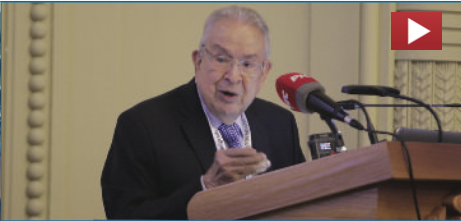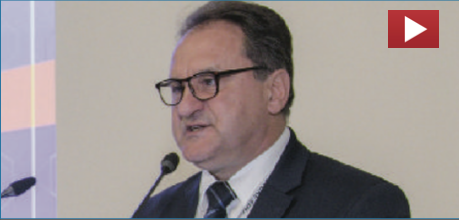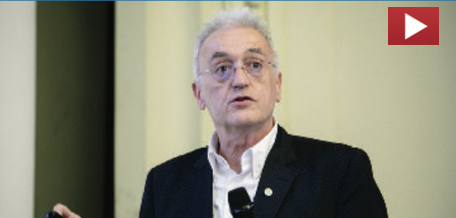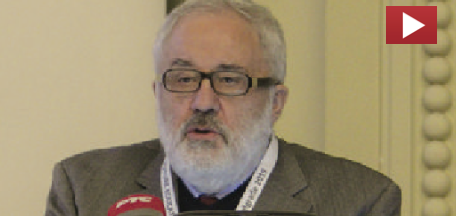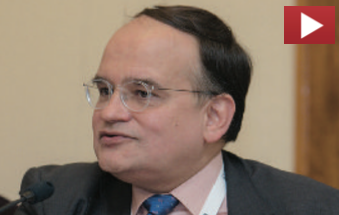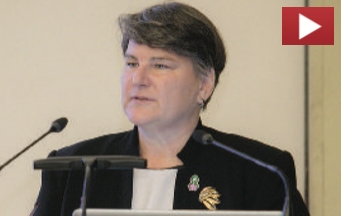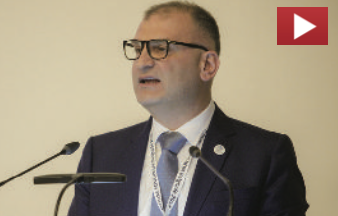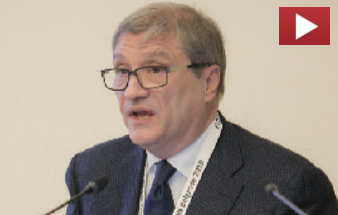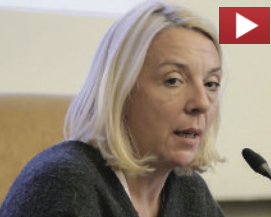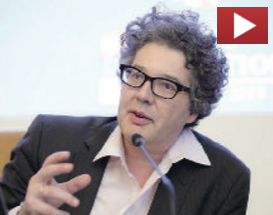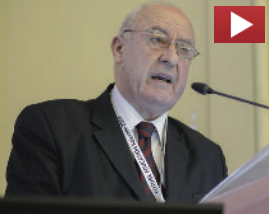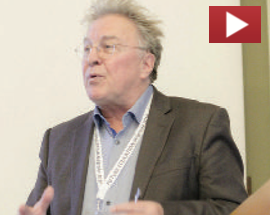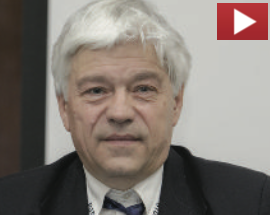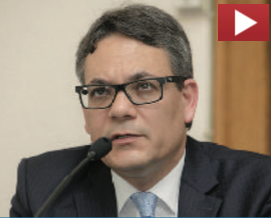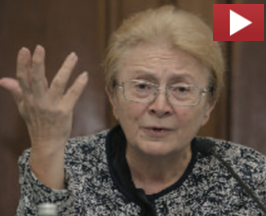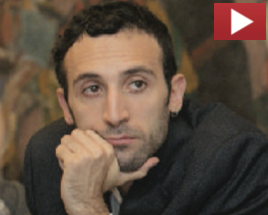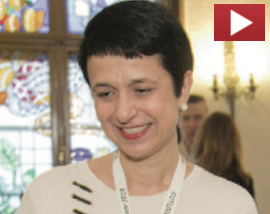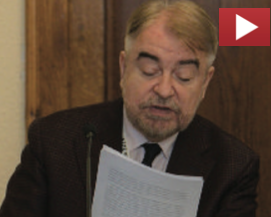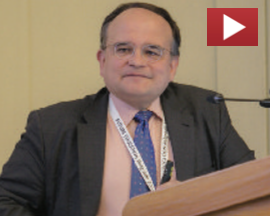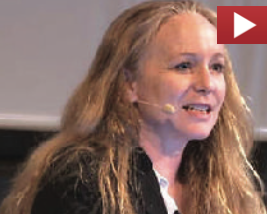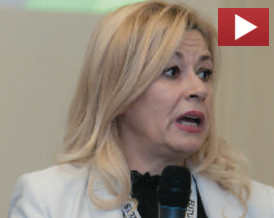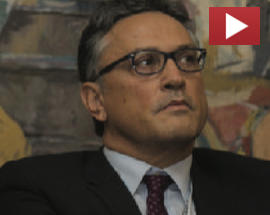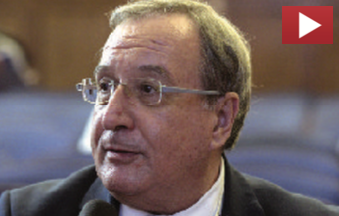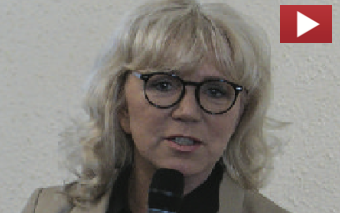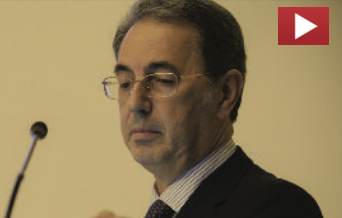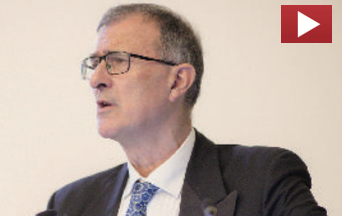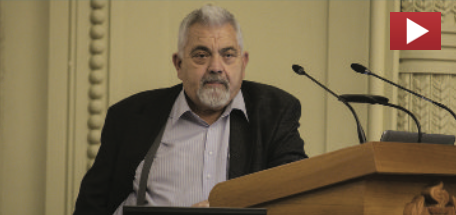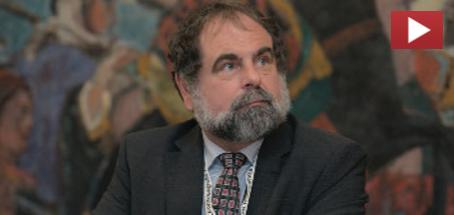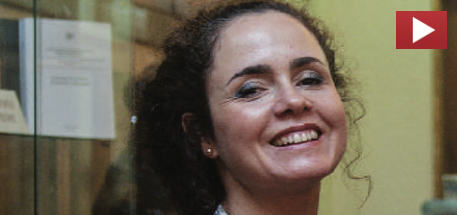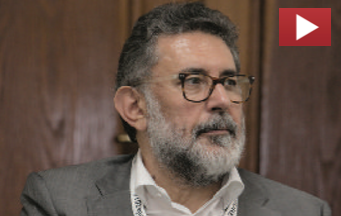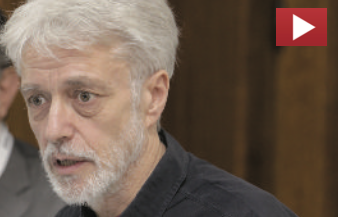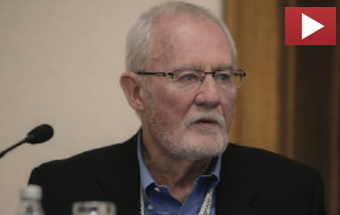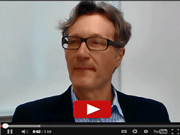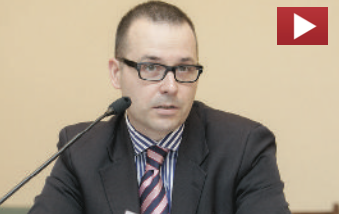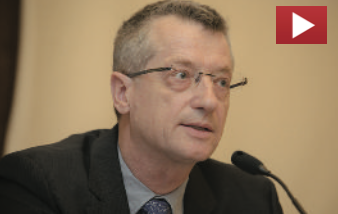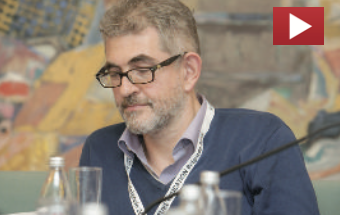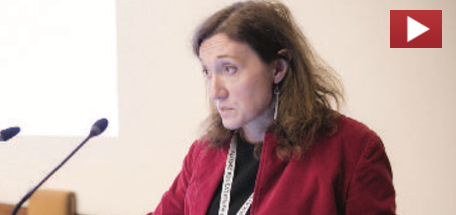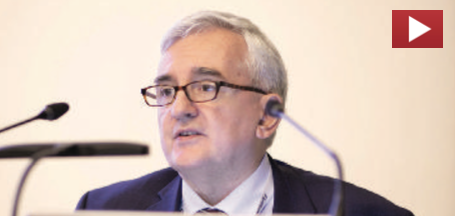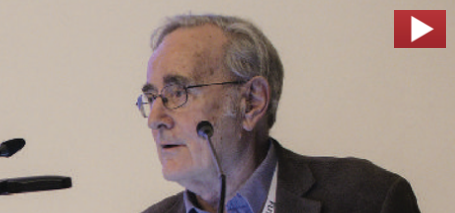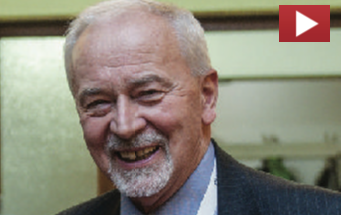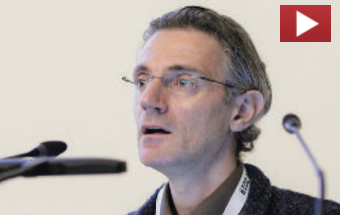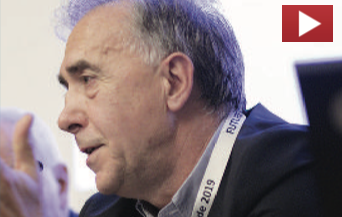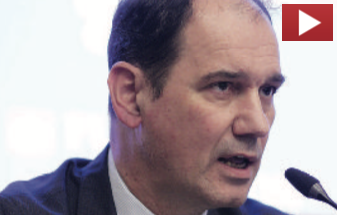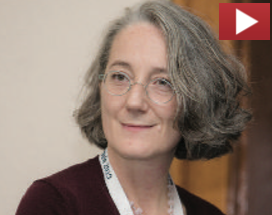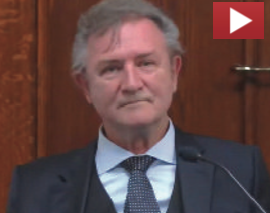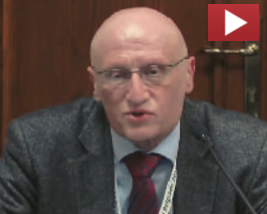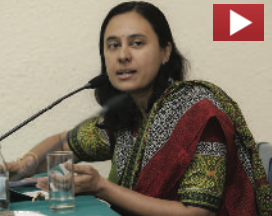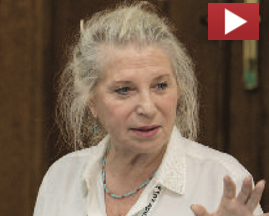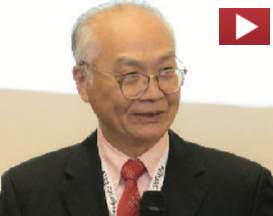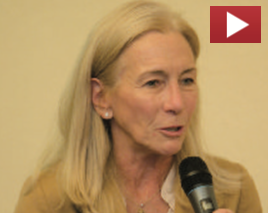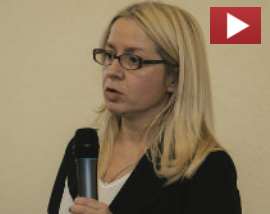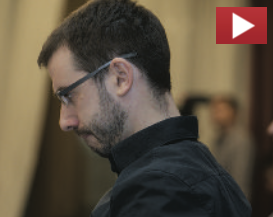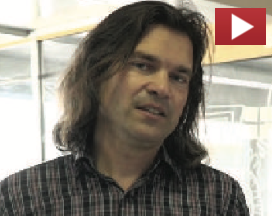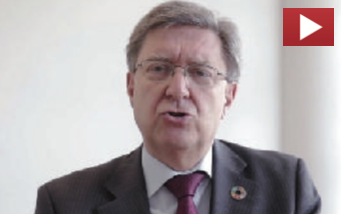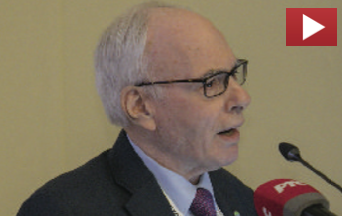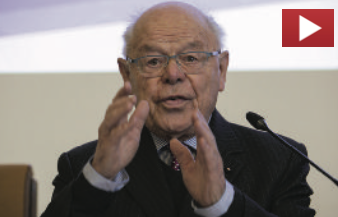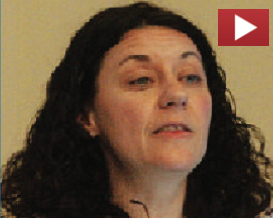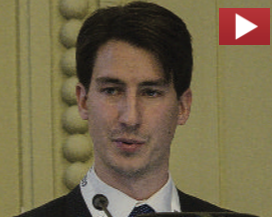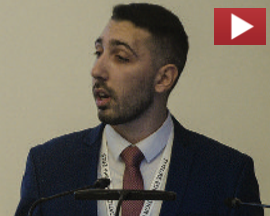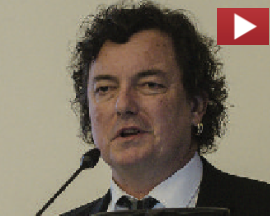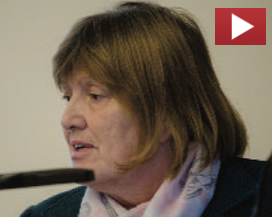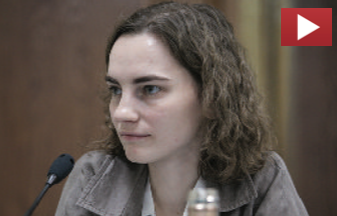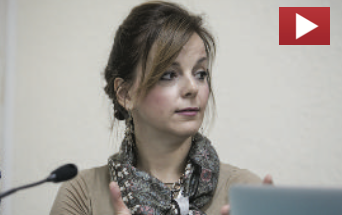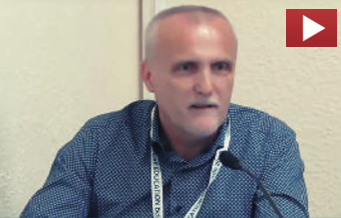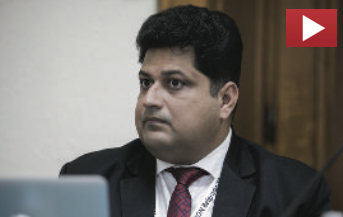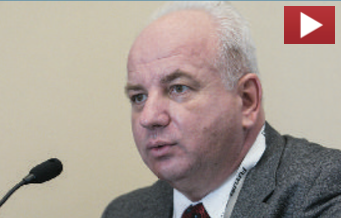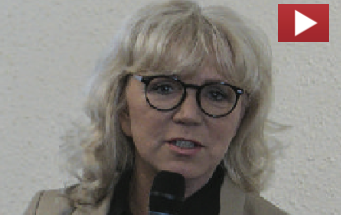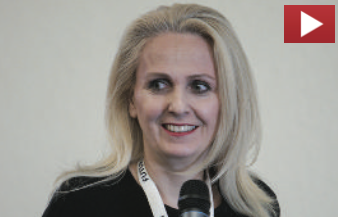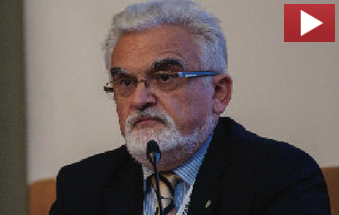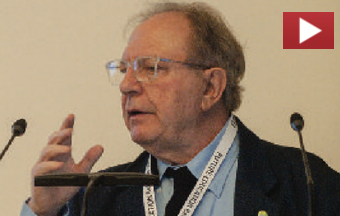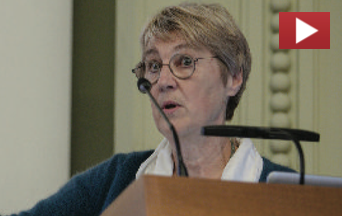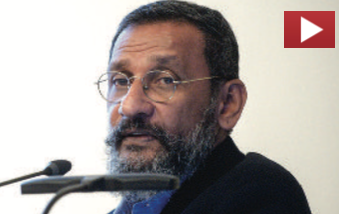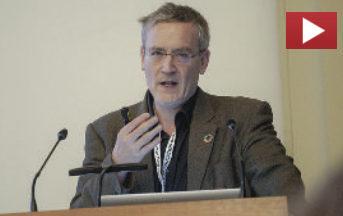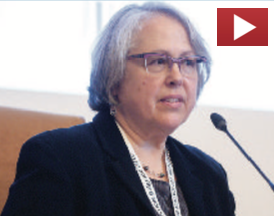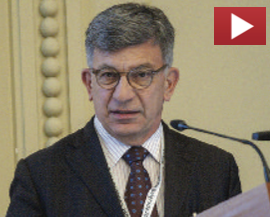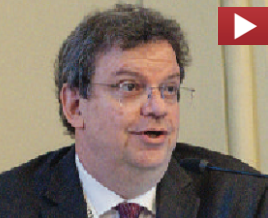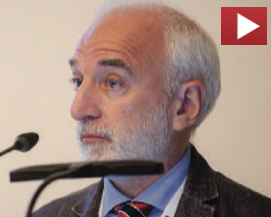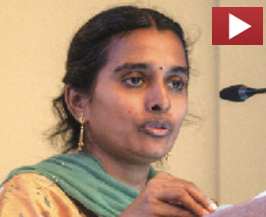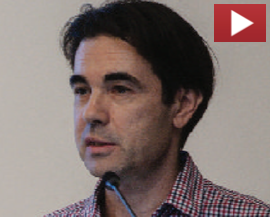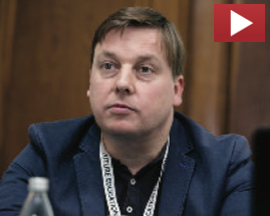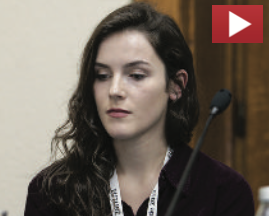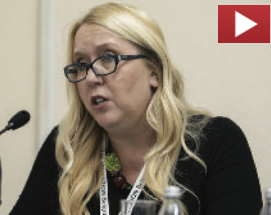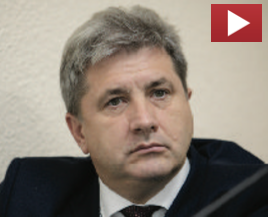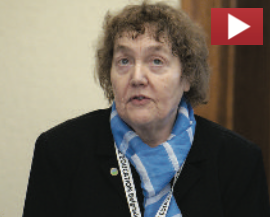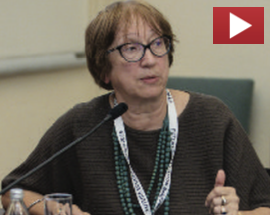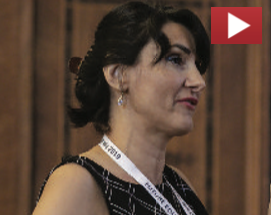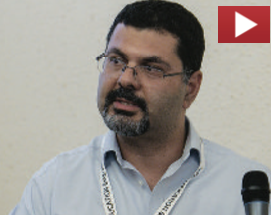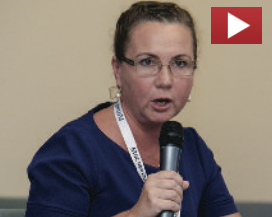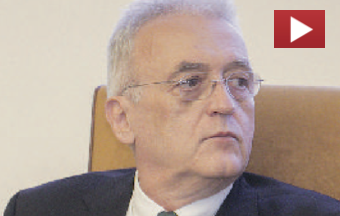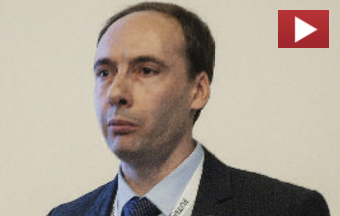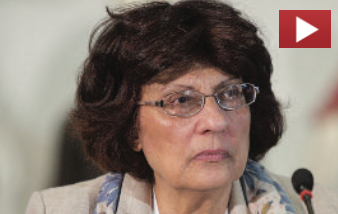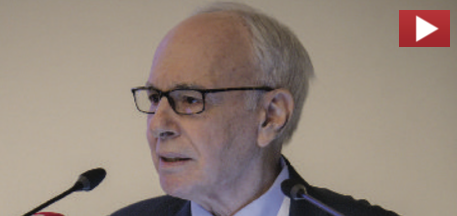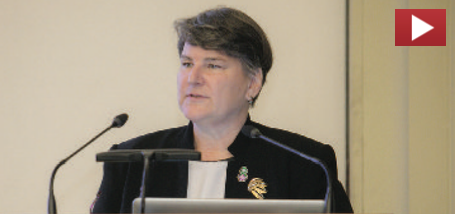4th International Conference on Future Education
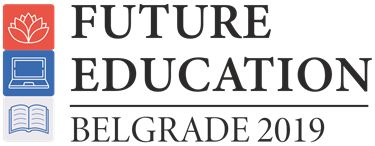
Fourth International Conference on Future Education
Belgrade, Serbia | November 11th – 13th, 2019
Educating for the Unknown: How Education Reforms Help to Avoid a Paradox that Future is Behind Us?
Challenges and Opportunities
We live in an amazingly interrelated world full of new normalities which bring a profound level of complexity and uncertainty into all aspect of our life. The global character of information, of work, and of ecology has had a tremendous impact on society and on the type of education needed to and to meet pressing challenges and avail of emerging opportunities.
Technology and Education are complementary drivers of social development. Each plays an essential role in developing and supporting advances of the other. Technological advances have been a principle catalyst for the development of professional and scientific education. So too, advances in education have been essential to prepare youth to understand and utilize the full capabilities generated by technological advances. Both have had a profound impact on the general progress of our work, society and culture. Globalization has magnified that impact and accelerated the pace of change.
Our present system of education was born at a time when information and knowledge were scarce and the means to acquire and disseminate them slow and laborious. It was a time centuries before the invention of printing, newspapers, textbooks, radio, motion pictures, television and the internet when oral instruction by a teacher was the only feasible method for knowledge sharing and the accumulated knowledge of humanity was extremely limited. This is no longer the case. Today we live in a world of information-glut. The average citizen has more information available at his fingerprints than the most knowledgeable, informed expert had access to just a few decades ago. Moreover, current knowledge is changing so rapidly that much of what was taught a few years ago is no longer up-to-date or even relevant. In order to handle the surplus of knowledge, the number of subjects taught has multiplied from a handful to nearly a thousand specialized disciplines and sub-disciplines. At the same time, the rapid technological advances of the 4th Industrial Revolution are placing new demands on the way we think, organize and work. Yet our basic method and system of education remains the same. In spite of rapid advances in technology, the impact of emerging technologies in the field of education has been relatively small.
As a consequence, there is an ever widening gap between the type of education the world needs and that which our present educational institutions, pedagogies, the learning technologies are able to offer, and the relevance of educational content being provided to students. The gap is also widening between societies and individuals that are able to adapt quickly to the demands for educational leadership, innovation and creativity, and those that lag behind. Education has become a critical competitive factor for both the individual and the society. Addressing these issues offers unprecedented opportunities for those who evolve more effective ways to equip the next generation for life in an increasingly rapidly-changing, complex and globalized society. These challenges are central to the work of the World Academy of Art & Science and the World University Consortium.
Focus of the Fourth International Conference of Future Education
In former international conferences on future education, the World Academy of Art and Science and the World University Consortium have examined in depth the nature of the educational challenges confronting humanity today, the educational requirements imposed by emerging technologies and globalization, and the need to break down the disciplinary silos of over-specialization that limit the practical relevance of the existing system to the real world as well as the need for changes in pedagogy and adapting of new learning technologies to expand access, improve quality and reduce the cost of education. Most importantly of all, they have explored the need for a fundamental shift in purpose and strategy from the subject to the student, from transmission of information to development of capacities for independent thinking and problem solving, from development of mental capacities to development of the full personality of the student needed for effective adaptation and achievement, and from education employees to developing creative thinkers, innovative entrepreneurs and good global citizens.
A new paradigm is urgently needed to shift emphasis to contextual, relational, human-centered, collaborative education that encourages critical thinking, creativity and technological entrepreneurship. Implementation of the new paradigm through strategy and policies will get effective answers through industrial policies supporting fully developed human potentials, primarily innovative breakthroughs that are multidisciplinary, applicable and value based.
This conference examined effective policies, strategies and pedagogies required to accelerate this paradigm change in education. It drew lessons, insights and practical approaches from successful innovations in education taking place around the world. It examined ways to overcome disciplinary barriers to provide the integrated knowledge needed for achievement in our increasingly complex world. It explored new methods to shift the focus from subject to students and from academic to contextual knowledge. It investigated emerging technologies and pedagogies that can shift the emphasis from teaching to active learning, from competitive to cooperative, and from teacher-student to peer-peer learning environments. Most importantly, it explored ways to promote the development of the capacities for creative thinking, personality and individuality that will prepare the next generation and the nation for high accomplishment in the years to come.

Fourth International Conference on Future Education
Belgrade, Serbia | November 11th – 13th, 2019
Click here to download the PDF version of the FE 2019 Report

Report on the 4th International Conference on
Future Education – Belgrade 2019
Charting out Fundamental Principles for a New Paradigm in Education
|
|||
|
The speed, magnitude, and complexity of the challenges confronting global society today pose serious challenges and demand major transformational changes in the way we prepare future generations for life in an increasingly unified, rapidly evolving global society. Existing educational institutions struggle to keep up with these challenges and seek answers to the following critical issues:
|
The Fourth International Conference on Future Education in Belgrade was an endeavor to develop conceptual and practical solutions to these challenging issues. There are no simplistic solutions to address any of these challenges. The Belgrade Conference was an important step towards formulating a new paradigm of education that is transdisciplinary, person-centred, contextual, collaborative and value-based. Education for Individuality
|
||
Organizers, Co-Chairs and Themes of the Conference
|
|||
 |
|||
|
The themes of the first five Plenary Sessions were:
The topics of the Panel Discussions were:
|
The sixth Plenary Session was devoted to the chosen themes of interest for future education: rainbows as complex phenomena; the island of stability in the periodic table of chemical elements; multiculturalism and interculturalism; and the Confucian philosophy and civic education. The Conference included a concert at the National Museum in Belgrade. |
||
University and Globalization
|
|||
Transformation in Education for Global Leadership
|
|||

Person-Centered Approach |
|||
A New Paradigm of People-centered Sustainable Education
As the principal social organization for the development of human capabilities, education must necessarily play a central role in enabling us to meet the needs of all human beings and protect and promote human and natural capital. We need to create a new paradigm of people-centered sustainable education at every level of formal and informal education. To learn how to listen, how to understand empathetically, how to respect the different needs of ourselves and others is education that protects and promotes individual and social health of all life forms. |
Developing the Whole Individual
|
||
 |
|||
Keeping Pace with Changing Social Needs
Critical thinking, communicating, a sense of the changing world around us, and a capacity to help solve problems using new technologies all impact the goals of educators from pre-school to graduate school. Effectively ensuring that this education remains consistent and nimble is of paramount importance to educators from the early years through collegiate education to graduateeducation. There must be close collaboration between the various parties so that our learners might yield the best benefit. |
|||
From Subject-centered Learning to Student-centered Learning: A Case Study
|
|||
 How can students be made to look forward to Monday morning rather than Friday evening? The Global Institute of Integral Management Studies (GIIMS) is a post-graduate business institute in Kochi, India which has brought about this and other radical improvements by transforming itself into a person-centred organization where learning is contextual, collaborative, life-based and transdisciplinary, and where teachers facilitate learning instead of delivering lectures. How can students be made to look forward to Monday morning rather than Friday evening? The Global Institute of Integral Management Studies (GIIMS) is a post-graduate business institute in Kochi, India which has brought about this and other radical improvements by transforming itself into a person-centred organization where learning is contextual, collaborative, life-based and transdisciplinary, and where teachers facilitate learning instead of delivering lectures.
Until recently this institute faced multiple challenges common to many other schools and colleges around the world, such as student absenteeism, lack of classroom participation, poor learning outcomes, low teacher morale and employers’ dissatisfaction with the graduates of the institution whom they hired, even after a year or two of classroom learning. Convinced of the futility of using textbooks that provided abstract, fragmented and outdated information, and classroom lectures that students could not relate to, in summer 2018 GIIMS introduced radical innovations in the pedagogy and content of the programs they offered. The first step was to remove the widespread misconception that logistics is a specialized field of high technology jargon unconnected with everyday life. GIIMS repositioned logistics as a fundamental component of every facet of society—from moving people and products to transferring money and information, from overnight parcel delivery to celebrating an Indian wedding with |
3000 guests, managing 1.5 million visitors to the 2018 FIFA World Cup Football championships in Russia, and handling emergency relief after the record floods that dislocated tens of thousands of Kerala citizens during the school year. When students exhibited interest and actively participated, class attendance soared to 99%, learning and retention rates increased markedly, enrollment kept rising as GIIMS’ reputation spread through word of mouth, and employers began to clamour for more GIIMS students to hire in their firms.
In the process, faculty members’ interest, enthusiasm and impact have risen markedly. Active, peer-to-peer interactive learning has replaced classroom lectures. Students have started asking a lot of questions. Hollywood and Bollywood movies prove to be an excellent source of real world examples. Students have been studying a variety of real life events like national elections, online shopping, movie-making, space travel, disaster relief, and festivals. Students learn logistics as a practical set of concepts and methods rather than abstract principles from textbooks. Recruiters flock to the institute for hiring its graduates. Other institutes teaching logistics are now hiring fresh GIIMS graduates as faculty members to teach in their own institutions, and all these changes have made the institute the largest logistical institute in India all because of flipping the paradigm and placing the student rather than the subject at the centre. |
||
Experiential Immersive Learning
|
|||
Finnish Secrets for Better Education
The Finnish education system does not cater to standardized tests, it focuses on the student instead. Classes provide opportunities for practical and outdoor study, and emphasize cooperation rather than competition among students. The school schedule ensures sufficient rest and relaxation for teachers and students. Teachers are accorded a high social standing in Finnish society, and the entire country has adopted education as an essential investment in people. |
|||
Educators as Pillars of Every Nation
|
|||
|
TransdisciplinarityTransdisciplinary, Life-centered Education |
|||
 In the process of taking the knowledge learned from experience over millennia and encapsulating it into an educational program that is offered to every student, we have condensed, abstracted and categorized information into small portions. This has led to fragmentation of knowledge, which is reflected in fragmentation in the way we teach, learn, think, understand, build institutions, make policies, work and cope with the world. Our understanding and our lives are becoming increasingly fragmented, compartmentalized and disconnected. Financial systems have become divorced from the real economy they are intended to serve. Technological development is divorced from its impact on employment, human welfare and social stability. Economic theory and policy are arbitrarily separated from the political, legal, technological, social, cultural and psychological dimensions which constitute the foundation and playing field for economic functioning of society. In the process of taking the knowledge learned from experience over millennia and encapsulating it into an educational program that is offered to every student, we have condensed, abstracted and categorized information into small portions. This has led to fragmentation of knowledge, which is reflected in fragmentation in the way we teach, learn, think, understand, build institutions, make policies, work and cope with the world. Our understanding and our lives are becoming increasingly fragmented, compartmentalized and disconnected. Financial systems have become divorced from the real economy they are intended to serve. Technological development is divorced from its impact on employment, human welfare and social stability. Economic theory and policy are arbitrarily separated from the political, legal, technological, social, cultural and psychological dimensions which constitute the foundation and playing field for economic functioning of society.
As we compartmentalize the complex inter-related reality into a thousand disciplines and subdisciplines, each division creates a specialized expertise while obscuring sight of the connectivity between different fields of knowledge. Most of the problems we face at the global level are a result of this attempt to address separate parts of the real world and ignore its interconnected wholeness. Life problems rest in the interstices between disciplinary fields of knowledge, in the no-man’s land region wherethe disciplines remain separate with different perspectives and no one is in charge. |

In order to address these challenges, we need a transdisciplinary perspective that bridges the narrow and deeply entrenched boundaries within education. The need for integrated education is already recognized in fields such as Artificial Intelligence where knowledge of psychology, neuroscience, computer science and mathematics is essential. WAAS seeks to foster the development of scientific research and educational systems that transcend narrow disciplinary boundaries to address the complexity of modern life as it really exists and evolve effective integrated solutions. |
||
Future Capital Initiative (FCI)
|
|||
Shift from Passive to Active, and Competitive to Collaborative Learning |
|||

To close the gap between education and current societal problems we cannot use the same kind of thinking that caused those problems. Countries with a high Human Development Index overshoot planetary boundaries, while nations living within those boundaries are deemed ‘less developed’. Future-proof education requires rethinking how we currently define ourselves (as godlike beings above nature), our relationship with life (as a resource for extraction), and our economic-technological means (increasing entropy and depleting life to make money). |
 Today a new type of civilisation is emerging. Countless initiatives explore open and collaborative ways: biomimicry-based technologies and economic- monetary systems are being designed to restore the wellbeing of communities and ecosystems in accordance with SDGs. Today a new type of civilisation is emerging. Countless initiatives explore open and collaborative ways: biomimicry-based technologies and economic- monetary systems are being designed to restore the wellbeing of communities and ecosystems in accordance with SDGs.
Nourishing future education requires:
|
||
Redesigning the University for Transdisciplinarity
|
|||
Need for a World University
We have to recognize the need for interdependence in order to actualise it, and we have to know how to act once we have developed that recognition. In ensuring a broad-based education that is globally recognized and allows for global mobility of students, there is a need to develop a World University System that promotes networks of universities with shared qualifications and close research collaborations. Governments, Ministries of Education, Research and Innovation together with Presidents of universities should take action to reform our university systems and academic structures for the future welfare of the economy and society. |
Network Knowledge for the 21st Century
Modern knowledge largely depends on our ability to create networks, or to join existing networks. The ability to network (where to find knowledge, how to develop networks, how to be linked and with whom) is one of the most important skills for the 21st century. The SDGs are interconnected. Therefore, an understanding of linkages between SDGs and targets is crucial for integrated governance and policy coherence in implementing SD strategies. Educating students for an interlinked world is the only way to achieve a sustainable future for mankind and Earth. |
||
Learning by Collaborating
Studies of collaboration among children and youth suggest that the main challenges they face when they need to collaborate are: having a mutual understanding of the task and of others; respecting others, their perspective and contribution; coordinating argumentative discussion; and building a joint perspective. These findings indicate what kind of education we need today in order to prepare new generations for the future. |
|||
The Future of UniversitiesIf higher education sector is to be transformative, it needs to transform itself – Tilbury, 2011 |
|||
 This statement captures the essence of our exploration of the future of knowledge production and learning in the context of the Anthropocene-Capitalocene, focusing on the idea that thinking, knowledge, beliefs and worldviews—the ‘inner worlds’—contribute to powerful, often invisible, drivers underpinning such crises. The EU network ‘INTREPID’ explores obstacles and enabling conditions for interdisciplinary research in universities, essential to addressing sustainability. INTREPID’s Future Initiative studies the role of universities in contributing to transformative change. This statement captures the essence of our exploration of the future of knowledge production and learning in the context of the Anthropocene-Capitalocene, focusing on the idea that thinking, knowledge, beliefs and worldviews—the ‘inner worlds’—contribute to powerful, often invisible, drivers underpinning such crises. The EU network ‘INTREPID’ explores obstacles and enabling conditions for interdisciplinary research in universities, essential to addressing sustainability. INTREPID’s Future Initiative studies the role of universities in contributing to transformative change. |
Universities can become places of: 1) maximum leverage, 2) questioning and exposure, 3) transformation, 4) engagement, 5) envisioning, and 6) all-system change. With these six priorities, we propose to undertake a journey ‘from problem to solution,’ allowing universities to reclaim their role of maximum leverage through the promise of each individual’s potential to thrive, electing the wellbeing of all life, the celebration of diversity and connectedness to become the driving forces of learning and knowledge to shape the future. |
||
  |
|||
|
Value-based EducationThe Value of Values |
|||
 Just as physical skills channelize and direct physical energy to produce results, values accomplish the same at the psychological level. If every one of our youth were as dedicated to women’s education as Malala Yousufzai or emphatic about protecting the environment as Greta Thunberg, our problems would disappear. An education that nurtures in every individual a strong commitment towards values has already directed the future towards sustainable and inclusive accomplishment for all. Values are the ever receding goals of perfection that raise the quality of a product, service, act, organization, society or an individual. Sustained success in any field, at any level is possible only when positive, progressive values such as integrity, reliability, perfect organization, cleanliness, precision and punctuality are adopted. Among the many ways in which we have fragmented knowledge is the sanitisation of objective facts from subjective human experience. Data obtained from physical experiments and working models, and which can be proven or replicated in the laboratory are considered scientific. All else is generally considered of secondary significance. Just as physical skills channelize and direct physical energy to produce results, values accomplish the same at the psychological level. If every one of our youth were as dedicated to women’s education as Malala Yousufzai or emphatic about protecting the environment as Greta Thunberg, our problems would disappear. An education that nurtures in every individual a strong commitment towards values has already directed the future towards sustainable and inclusive accomplishment for all. Values are the ever receding goals of perfection that raise the quality of a product, service, act, organization, society or an individual. Sustained success in any field, at any level is possible only when positive, progressive values such as integrity, reliability, perfect organization, cleanliness, precision and punctuality are adopted. Among the many ways in which we have fragmented knowledge is the sanitisation of objective facts from subjective human experience. Data obtained from physical experiments and working models, and which can be proven or replicated in the laboratory are considered scientific. All else is generally considered of secondary significance.
One of those fields that have thus been relegated is that of values. But a study of any event in history, a reading of the biography of any inspiring leader, and even a reflection on one’s own life experiences can convince one that values play a determinative role in success of any kind. By excluding subjectivity from our education, we diminish the value of the education we give our youth. An education that ignores any perspective fails to take advantage of the wealth of knowledge that is available to us. The wisdom that has been gleamed from millennia of human experience has often been encapsulated in the form of values and passed down traditionally generation after generation and through informal education. But since values fall in that area of human |

experience that cannot be proven in a scientific laboratory setting, our education generally restricts itself to the transfer of the knowledge of objective facts. However, a look at the world around us shows that the challenges we face today are caused in part by a lack of values in our personal, social and political spaces. When the knowledge of values is cleared of anachronisms and superstitions, they can become a valuable source of intuitive knowledge and power with practical value. There has been no case of sustained success in the absence of strong positive values. It is only those that are committed to values who accomplish at a high level. Values differentiate the few on top from the many below. We need a holistic education that brings back the truths of human subjectivity and the power of positive values into our education. |
||
The Source of Exponential Development
|
|||
Education for the SDGs
|
|||
 |
|||
|
Education and Employment |
|||
Developing Human Potential
|
|||
EntrepreneurshipBusiness is the economic engine of all modern societies. The need of the hour is entrepreneurship. It is not the mega companies which create new jobs, new products and national wealth. Instead of giving concessions and incentives to large corporations, a nation’s focus should be on rapidly developing startups and SMEs. The creation of a startup culture will encourage talented youth and experienced managers to opt for self-employment instead of the security of salaried jobs. Entrepreneurialism requires not just engineering, accounting or other technical expertise, it requires a set of attitudes and values—to aspire, venture, take risks, accept responsibilities, anticipate, envision and lead. An entrepreneur must have the psychological personality and a well-developed individuality. Entrepreneurial values, attitudes, skills and knowledge can be effectively developed even in schools. We need an education that can create an entire generation of entrepreneurs. That will be the solution to our problem of unemployment. |
Education as an Employment ProviderThe future world needs more and better informed, educated and broadminded individuals capable of learning quickly and adapting continuously to change throughout their lifetimes. Education provides the essential foundation for life-long learning. Secondary education is not enough. A college education will be as essential in future as primary education became in the 20th century. One of the most effective strategies for ensuring higher job growth rates is to raise the mandatory minimum and average level of education in every country. The immediate result of raising the mandatory minimum age will be to generate millions of new jobs for teachers, construction of more schools and production of educational materials. It will also slow the entry of youth into the labour force. In the medium term this will raise the qualitative capabilities of the workforce, spawn and attract businesses in search of qualified manpower. |
||
Skills for the Future
|
|||
Why is Education the Key to Sustainable Development of Society?
|
|||
Education for Sustainable Entrepreneurship
Educating for sustainable entrepreneurship enables large populations to participate in political and economic governance and enhance the integration of the legal and legitimate interests of the population. |
|||
Collaboration: Key to building ecologically
|
|||
 The global goal of education is to raise individuals who can communicate, comprehend and feel empathy for each other. The global goal of education is to raise individuals who can communicate, comprehend and feel empathy for each other.
|
 |
Vocational Training in India
As India’s economy grows, there is an urgent need to produce technicians of international standards to meet industry’s rising demand for skilled manpower. However, the vocational education stream in India is quite small. The enrolment rate of students at the high school level and above is 5.5%, whereas it is 17% in China, 24% in France, 29% in Italy, 65% in the UK and 80% or more in Switzerland, Denmark and Germany. A mere 5% of the country’s workforce has received formal vocational training. So the Government of India has established a National Skills Development Corporation as a public-private partnership with the objective of imparting employable skills to 150 million Indian youth by 2022. The government has also announced a centrally-sponsored program to upgrade all Industrial Training Institutes with a view to producing technicians of international standards.
Bridging the Skills Gap
 Skills gap is a favourite bone of contention for the industry and academia. The two spheres are quick to blame each other. The industry points at the problem of reskilling, the inability of university graduates to innovate, the outdated knowledge and approaches that they demonstrate. Academia claims that the industry is not ready to cooperate: it is too closed, incapable of providing a clear list of competencies needed, and is reactionary. In the meantime, the storm is rising—the global and national labour markets and the very nature of work are changing. The first step towards addressing this change and solving the issue of skills gap is making the industry and academia work together. In this cooperation, the university can play a number of different roles: it can respond to the industry’s needs; it can be a strategic partner; it can be a driver of change.
Skills gap is a favourite bone of contention for the industry and academia. The two spheres are quick to blame each other. The industry points at the problem of reskilling, the inability of university graduates to innovate, the outdated knowledge and approaches that they demonstrate. Academia claims that the industry is not ready to cooperate: it is too closed, incapable of providing a clear list of competencies needed, and is reactionary. In the meantime, the storm is rising—the global and national labour markets and the very nature of work are changing. The first step towards addressing this change and solving the issue of skills gap is making the industry and academia work together. In this cooperation, the university can play a number of different roles: it can respond to the industry’s needs; it can be a strategic partner; it can be a driver of change.
Educational Technology
Creating a World University
|
All forms of learning enabled by information and communication technology—multimedia, internet, digital content, online tutoring, MOOCs (Massive Open Online Courses), and virtual reality—can be combined with the best of traditional learning methods. The resultant hybrid learning model is an effective system that can convert the SDGs on Education into a reality. The education technology market is projected to grow at 11% annually and reach $341 billion by 2025. The global education market is estimated at $6 trillion, and has enormous scope for digitisation. Mobile education is a natural step ahead given the great proliferation of cell phones. More than 40% of the people worldwide have a smartphone. Penetration ranges from 82% of the population owning a smartphone in the UAE to Bangladesh where the number is just over 5%. However, these numbers are on the rise, more so among youth (Half the children in America have a cell phone of their own by the age of 7). |
Delivering educational content through the smartphone is a smart and effective way of harnessing the power of mobile technology and multimedia. One of the goals of the founders of the World Academy in 1960 was the establishment of an informal “World University” at the highest scientific and ethical level. Now it is possible due to the information and communication technology available today. A virtual university can engage the highest quality instructors and educational materials to deliver high quality education at a fraction of the cost of current systems. Formulation of comprehensive national or international delivery systems for internet-based secondary and higher education can dramatically transform education worldwide. While the cost and expertise for producing high quality multimedia instructional materials may be prohibitive for small countries or private firms, a global consortium such as WAAS or the World University Consortium, backed by national governments could elevate the quality of education globally to the highest levels now seen in the most advanced nations. All these make the use of technology in education no longer an option, but a requirement for entry into the global community and economy. |
Reinventing Universities
 Rapid technological advances have been decisively influencing the process of traditional education. Students today are technologically literate and possess digital skills that allow for multimodal learning and instant access to knowledge. Their personalized learning model is: “We want to learn Anytime, Anything, Anywhere. At our pace, at our place.
Rapid technological advances have been decisively influencing the process of traditional education. Students today are technologically literate and possess digital skills that allow for multimodal learning and instant access to knowledge. Their personalized learning model is: “We want to learn Anytime, Anything, Anywhere. At our pace, at our place.
The evolution and extent of novel learning technologies, such as distance learning, MOOCs, collaborative environments, and virtual reality open up multiple pathways to flexible education. These developments urge universities to constantly reinvent themselves with the adoption of new technologies. Universities will have to offer more personalized teaching options and further explore the flipped-class model, by accepting and embracing the reality of ubiquitous and universal access to knowledge. At the same time, they must brace themselves for the next major disruptive technology (possibly the brain-machine interface), which may arrive sooner than we think and will be championed, not by a teacher, but by an entrepreneurial engineer.
In the Era of Endless Possibilities
 |
 Climate change and increasing inequality and income/wealth concentration in the hands of a few are the two most challenging problems the world faces today. This is inherently due to the wrong model of growth and outdated economic policies. Our earth as a system is not isolated but interconnected. Economists have increasingly become toys in the hands of politicians. This needs to change and can change. We now live in an era of the Fourth Industrial Revolution, an era of endless possibilities, and also endless threats. Climate change and increasing inequality and income/wealth concentration in the hands of a few are the two most challenging problems the world faces today. This is inherently due to the wrong model of growth and outdated economic policies. Our earth as a system is not isolated but interconnected. Economists have increasingly become toys in the hands of politicians. This needs to change and can change. We now live in an era of the Fourth Industrial Revolution, an era of endless possibilities, and also endless threats.
|
Blended Design Thinking
|
EPFL’s Graasp.eu is an innovative, free, and open access platform that supports personal, collaborative, and inquiry-based learning, as well as design and computational thinking. Being agile is essential for such tools to enable seamless interventions initiated either by the students or the teachers. Teachers can create digital OERs that can be shared with colleagues and |
students. Students can create online shared spaces supporting, as an example, collaborative design think- ing activities, hence contributing to at least three SDGs, i.e. quality education; industry, innovation and infrastructure; as well as partnership for the goals. The structure of the design thinking space available in the platform exactly matches the design thinking phases carried out face-to-face by the students, facilitating the blending between the digital and the physical modalities and activities. Courses implemented with this blended model have proven to be effective and attractive for students. All these make the use of technology in education no longer an option, but a requirement for entry into the global community and economy. |
Democratization of Education
 Technology democratises education and makes it inclusive. It facilitates life-long learning. It overcomes a range of limitations of the traditional classroom, and provides learning to people with disabilities and other constraints.
Technology democratises education and makes it inclusive. It facilitates life-long learning. It overcomes a range of limitations of the traditional classroom, and provides learning to people with disabilities and other constraints.
There are anywhere between 25 and 50 million refugees worldwide, half of whom are children. Technology can partly compensate for the lack of an organized education program for these displaced youth.
Gaming: The New Age Learning Tool
|
 |
Impact of Digital Transformation on Creative Leadership Skills
|
All human knowledge generated and transmitted doubled in size around year 1500. It doubled again by 1750 (only 250 years), and doubled again by 1900 (just 150 years). With those rates, humans were able to adapt to the growth and change. It became harder to adapt when the doubling took 25 years around 1950. The knowledge doubling today takes much less time (around 13 months). Within the next decade, the knowledge doubling is expected to happen every 12 hours. It is not feasible for a human to adapt to that rate. Are we capable of finding a solution to adjust to that pace? How can we learn all that is needed in the old educational system? The time has come to revamp the traditional educational system at its core, by using digital transformation in the right way. Many technologies like virtual, augmented, and mixed reality can enhance training and education. The new system must be personalized to match the diversity of individual abilities and styles of learning. The digital transformation is shifting the economy of atoms to the economy of bits. The economy of atoms is an economy of scarcity: atoms are limited; if you give an atom away you no longer have it. On the contrary, the economy of bits is an |
The first step is leading to augmenting the physical abilities of a person (imagine having a wavelength converter embedded in the eye that allows a person to see in the infrared or UV spectrum), then reaching a point where many persons are markedly different from natural people because of their extended capabilities. These could include specific“improvements like a permanent, seamless, connection to the web, made possible by advanced Brain-Computer Interfaces. This stage would characterize the development of human 2.0.” |
Open Educational Resources
 The Institute for the Study of Knowledge Management in Education, USA, founded by Lisa Petrides, leads the Open Educational Resources (OER) movement.
The Institute for the Study of Knowledge Management in Education, USA, founded by Lisa Petrides, leads the Open Educational Resources (OER) movement.
Digital libraries like OER Commons are built by creating, vetting, modifying and curating educational materials that are freely available to all. It not only makes high quality education affordable, but also creates a shift in teaching practice.
Adaptability of resources provides opportunities for personalized learning. OER increases collaboration among educators, aiding them in continuously improving instruction and implementing innovative ideas.
Need for Simulation Modelling in Complex Evolutionary Systems
 The challenges facing humankind, recognized as ‘wicked’ problems, are interdependent; they are collective action problems; they involve aspirations for whole system change; they are dynamic, and involve future trajectories of the whole system; they are subject to unpredictable and continuous change.
The challenges facing humankind, recognized as ‘wicked’ problems, are interdependent; they are collective action problems; they involve aspirations for whole system change; they are dynamic, and involve future trajectories of the whole system; they are subject to unpredictable and continuous change.
The world must be seen as a complex evolutionary system that is subject to change and the emergence of unpredictable structures and whose future is in part determined by human choices.
What is needed to help us address the world’s problems are tools that help us perceive the long term and systemic consequences of societal choices in an ever-changing world.
Such tools should focus on continuing exploration of future trajectories that are coherent with the laws of physics and other regularities as they are revealed by scientific endeavour.
It is then up to humankind to choose from amongst the possible trajectories and adapt our behaviour accordingly.
Impact of Research & Innovation on Education
 The most important impact of research on education is creating a new knowledge that helps us better understand our world, resolve existing problems and leads to a paradigm shift in one or more disciplines. It requires that the education system be open to new knowledge coming from both basic and applied research. Although new technologies do not shift paradigms in scientific disciplines, they make radical changes in human behaviour and activities, including in the education process. The Information Revolution has radically changed ways of communication, cut distances and through teaching platforms has provided students access to participate in courses at the world’s best universities. Artificial Intelligence offers tremendous opportunities, including self-learning.
The most important impact of research on education is creating a new knowledge that helps us better understand our world, resolve existing problems and leads to a paradigm shift in one or more disciplines. It requires that the education system be open to new knowledge coming from both basic and applied research. Although new technologies do not shift paradigms in scientific disciplines, they make radical changes in human behaviour and activities, including in the education process. The Information Revolution has radically changed ways of communication, cut distances and through teaching platforms has provided students access to participate in courses at the world’s best universities. Artificial Intelligence offers tremendous opportunities, including self-learning.
Taking into account the acceleration of knowledge generation combined with unprecedented dynamics of emergence of new technologies, there is an urgent need to shift the paradigm of education from still dominant passive knowledge transfer to active student-centered education by building learning communities where new knowledge is discovered. It is happening in the world’s top universities but it is neither common nor easy to implement, and requires resources for overcoming many barriers and challenges.

Big Modelling and Action-driven Education
|
Global challenges present unprecedented governance issues and their management shows significant leadership and resource deficits. There is a need to put at the disposal of international, national and sub-national decision-makers and intervention operators novel modelling technological platforms embedded in innovative networking arrangements like action-driven education (EduAction). Big Modelling and EduAction coupled would not just support decision-making, but act as resource force multipliers. The Big Modelling for Global Challenges initiative is creating a global ‘collaboratory’ that will bring together a critical mass of communities of computer modelling practitioners, researchers, educational institutions, both formal and informal, industry, and relevant global policy and governance stakeholders that co-create and operate disruptive management tools and networking arrangements to address ‘wicked problems’. |
|

Integrated Thinking
Mind, Thinking & Creativity
|
Sixty-five percent of the children entering primary school today will eventually work in new job types that do not exist yet, according to the World Economic Forum’s Future of Jobs Report 2018. So what can we teach children in our schools and colleges today to prepare them for a future that we do not know about, and can at best try only to anticipate or imagine? Rather than teach children what to learn, what to think, and how to solve a set of problems we present to them, we need to teach them how to learn, think and handle any eventuality they may face in the future. Original, holistic, integrated thinking is essential not only to prosper but to cope with and survive in the future. Different types of thinking have different epistemological foundations and purposes. Analytic thinking is based on a positivistic, reductionist view of reality. It utilizes the mind’s capacity to divide reality into categories, classifications, sectors, subjects, topics, specializations, components, parts and particles, and regards each as if it exists independently of all the rest. Such a view has generated precise knowledge of the parts, but obscured the complex interactions and interdependencies between elements that provide knowledge of the whole. The study of the individual elements as separate aspects of reality is useful and necessary for practical purposes. But when mistaken for reality itself, it introduces significant distortions and errors. The insufficiency of analytic thinking led to development of more holistic ways of thinking founded on the capacity of mind to aggregate the fragments of reality conceived by analytic thinking in order to understand the interrelationships and interdependencies between the parts. Such synthetic thinking is a more inclusive type of thinking, but even that is inadequate to fully comprehend the intricate complexity of reality. |
Society, life and the world are an integrated whole. Every aspect and dimension is interconnected with all the others.
Integrality cannot be attained by simple aggregation and assembly of its constituent elements, nor can it be achieved by identifying the links between them. All knowledge seeks unity. The greatest discoveries in the natural sciences have been those that led to the unification of phenomena that had hitherto appeared to be unrelated to one another. Thus, Newton unified inertia and motion. Maxwell unified electricity and magnetism. Einstein unified space and time, gravity and acceleration. WAAS Fellow Abdus Salam unified the electromagnetic and weak nuclear forces. The capacity to identify relationships between apparently unconnected or contradictory phenomena is one of the defining characteristics of genius. In order to facilitate integrated thinking and the development of genius, departmental structures and courses in our colleges should be reorganized around real-world problems and opportunities by integrating all dimensions of the issue. That will require an integration of social theories to evolve transdisciplinary social science founded on the common underlying social principles and processes that transcend disciplinary boundaries. Finally it will require a shift in emphasis from exclusive development of analytic thinking that categorizes and compares, to synthetic thinking that embraces and connects different dimensions of reality, and integrated thinking which discovers their implicit interconnectedness and common underlying principles and processes. |
“Sustainable Development” Need No Longer Be an Oxymoron
|
High levels of human development imply high ecological footprints and vice versa. A key blind spot is to think of “us” and “them”: we separate the environment and other people from ourselves and exploit them, as if we could disentangle the web of interdependencies which keeps life alive. We split wholes into parts in a reductionist way. But reality is cybernetic, full with endless questions and responses, and our languages are too poor to grasp the richness of the world. This calls for a humbler perspective in which complexity and |
|
Holistic Education with 5 Elements
|
Following the pattern of development, we all start to “Imitate”, then to “Learn”, “Teach”, ”Coach” and finally “Innovate”. To match with the development driving force, we start by imitating everything we sense, just like “Water” flows everywhere; then learn with pattern, that is “Wood” with branches and roots; then we teach with enthusiasm, that is “Fire” with energy; then coach with accommodation, that is “Earth” with absorption; then we innovate with disruption, and that is “Metal” with its sharp cut. These five elements represent the mechanism of “Transformation”: Water, Wood, Fire, Earth and Metal, and recycled to Water again. The “Controlling” or “Limiting” element goes in the following sequence: Fire (Teach) melts Metal (Innovate), Metal (Innovate) cuts Wood (Learn), Wood (Learn) grows on Earth (Coach), Earth (Coach) stops Water (Imitate), Water (Imitate) eliminates Fire (Teach). |
 In this way, the curriculum will be designed based on “Needs” (Imitate, Learn, Teach, Coach, Innovate) in balance with each individual’s life. In this way, the curriculum will be designed based on “Needs” (Imitate, Learn, Teach, Coach, Innovate) in balance with each individual’s life.
|
Realizing Humane Intelligence in Connection with Laws of Nature
|
“Ethic-Talk” Technology, developed by Ethic-Talk Ltd., has used linguistic and psycho-physiological voice-based analysis of speech to develop a methodology and technology that helps the user become aware of previously subconscious trends; and to entrain and dramatically improve and upgrade his/her communicative and decision making skills. This can empower everyone, (without distinction of age, race, status or social background), to realize his/her full Human Potential by improving communication, social and |
intellectual skills and to solve everyday communication problems: domestic, working, academic and professional environments. |
Education reform applicable to diverse developmental conditions
 Rather than fearing the robotization of humans, we who invented technology in the first place should humanize it so it serves human needs.
Rather than fearing the robotization of humans, we who invented technology in the first place should humanize it so it serves human needs.
Any educational reform must be contextualized, in particular social and cultural traditions, values and worldviews, taking into consideration population size and demographic and developmental challenges, instead of introducing “one size-fits-all” models.
The successful Finnish experiment in Education Reform, which works well in the societal and cultural context of Finland, a relatively small and homogenous population, is to be critically explored for insights and not exported as a universal model.
We need to explore models of education in different countries for identifying both general features and country-specific features, as a foundation for building new Templates grounded in culture and political economy, as a way to implement Educational Reform applicable to diverse developmental situations and conditions.
The relationship between Multiculturalism and Interculturalism is demonstrated by the two vivid examples of historically-famous learning-research academies, The House of Wisdom of 9th century Baghdad and The House of Knowledge in 11th century Cairo, as that between form and process rather than polarized opposites.
Education for the Anthropocene: How to prepare for unprecedented challenges?
 The challenge of educating young people for the unprecedented challenges of the Anthropocene requires us to develop a new model of education, the “Geocentric Education”. This model aims to safeguard human survival and avert the disastrous possibility of a collapse of civilised cooperation. Some key attitudes and insights need to be cultivated in students:
The challenge of educating young people for the unprecedented challenges of the Anthropocene requires us to develop a new model of education, the “Geocentric Education”. This model aims to safeguard human survival and avert the disastrous possibility of a collapse of civilised cooperation. Some key attitudes and insights need to be cultivated in students:
- Stewardship implies respect for and protection of nature rather than an exploitative and controlling attitude. This requires identification with the whole of nature and life as our ultimate Self.
- Integrated learning implies an awareness that most phenomena and contemporary challenges (such as the SDGs) are of a systemic, embedded nature and must be understood and addressed as such, using interdisciplinary and inter-sectorial approaches.
- Collective wisdom needs to be fostered through education that gives learners ample opportunity to reflect and deliberate together toward the formation of shared values, priorities and future visions.
- Sufficiency must be cultivated as a core value of the Anthropocene as we adjust our personal life habits to achieve wellness and happiness first, deprioritising material wealth and reducing resource use to a much more modest level.
Education in the 21st Century
|
Creativity and innovative thinking are more valuable than rote learning of any depth. |
Curricula must be integrated around topics that reflect patterns, interactions and interdependencies among different fields. Liberal education in universities will help students develop creative thinking, communication skills, analysis and critical enquiry. |
Educating culturally different, environmentally responsible and globally aware citizens
 Anthropology has an important role to play in preparing students for the future. The most important values of anthropological perspective are holism and cross-cultural understanding and respect. Courses in Anthropology can be introduced into non-university education through two new courses, “National Cultural Heritage” and “World Cultures”, in both elementary and secondary schools. In parallel, other existing core curriculum classes, such as history, geography, national language with literature, art and design, music education, and physical and health education, should be enriched with content related to “national” and “global”, as well as “traditional” and “modern” cultures.
Anthropology has an important role to play in preparing students for the future. The most important values of anthropological perspective are holism and cross-cultural understanding and respect. Courses in Anthropology can be introduced into non-university education through two new courses, “National Cultural Heritage” and “World Cultures”, in both elementary and secondary schools. In parallel, other existing core curriculum classes, such as history, geography, national language with literature, art and design, music education, and physical and health education, should be enriched with content related to “national” and “global”, as well as “traditional” and “modern” cultures.
Global Understanding—A New Paradigm for Education
 Over the last few decades, everyone’s geographical living conditions have changed dramatically. Long- established geographical world-views of regions, countries and continents are losing their social, cultural and economic unity. Rules of time and space no longer apply. Mastering global challenges calls for a global understanding of life and living conditions everywhere. This calls for a paradigm shift in education that will enable learners to understand the global interconnectedness that transcends mere increase in communication. Understanding our natural, cultural, social and economic global interconnectedness is key to this new paradigm of education. We need an education that inculcates hybrid thinking on local challenges and their global impacts while instilling global citizenship values.
Over the last few decades, everyone’s geographical living conditions have changed dramatically. Long- established geographical world-views of regions, countries and continents are losing their social, cultural and economic unity. Rules of time and space no longer apply. Mastering global challenges calls for a global understanding of life and living conditions everywhere. This calls for a paradigm shift in education that will enable learners to understand the global interconnectedness that transcends mere increase in communication. Understanding our natural, cultural, social and economic global interconnectedness is key to this new paradigm of education. We need an education that inculcates hybrid thinking on local challenges and their global impacts while instilling global citizenship values.
Role of Education in the Implementation of the SDGs
|
The adoption of the SDGs by UN member-states is an unprecedented achievement. The fact that it has united 193 countries in agreeing on common goals for the whole world itself is remarkable. Yet, goal-setting is only the first step. Implementing the SDGs successfully in the coming decade requires integrated thinking at the highest level. Extensive research on technological, economic, social and political factors that will determine the level of success is required at the national level. At the international level, it will require unprecedented levels of cooperation between global and national agencies. The SDGs are interdependent on one another. None of them can be achieved independent of improvements in the others. For instance, curbing economic growth to reduce carbon emissions is in direct conflict with efforts to achieve full employment and social security. |
Extensive research is required to understand the interrelationships and interdependencies between these goals and the most effective strategies to achieve them in a mutually reinforcing rather than mutually conflicting manner. Successful achievement of the SDGs will require a radical change in public perceptions, attitudes and culture which cannot be achieved solely by changes in law and public policy. It can only be achieved by awakening and releasing the energies of the population based on a clear, integral vision of a better, more secure future for all humanity. Such a thought process in our adult population must be preceded by fostering and facilitating integrated thinking in our youth. Educational institutions have a key role to play in the process and consequently, in the successful implementation of the SDGs. |
Multiculturalism and Common Values
After all, Vasudhaiva Kutumbakam, meaning that the world is one family. |
 |
Interdisciplinarity and the Future of Social Sciences
 The future of social sciences and humanities lies in interdisciplinarity, a close cooperation with the natural sciences, and cooperation within the entire academic community.
The future of social sciences and humanities lies in interdisciplinarity, a close cooperation with the natural sciences, and cooperation within the entire academic community.

Rainbows as Complex Phenomena
 Meteorological rainbows appear in scattering of sunlight from water droplets in the atmosphere, and crystal rainbows occur in transmission of ions through crystal channels. The former effect comprises the primary and secondary rainbows—the bright circular bows seen in the sky at the angles of about 42° and 50° degrees relative to the horizon, respectively, and the supernumerary rainbows—the bright circular bows appearing on the inner side of the primary rainbow. The essential characteristic of a meteorological rainbow, as of all other types of rainbows, is an abrupt change in the intensity of scattered radiation across the rainbow angle, i.e., toward the inner side of the primary rainbow and the outer side of the secondary rainbow. The supernumerary rainbows are Meteorological rainbows appear in scattering of sunlight from water droplets in the atmosphere, and crystal rainbows occur in transmission of ions through crystal channels. The former effect comprises the primary and secondary rainbows—the bright circular bows seen in the sky at the angles of about 42° and 50° degrees relative to the horizon, respectively, and the supernumerary rainbows—the bright circular bows appearing on the inner side of the primary rainbow. The essential characteristic of a meteorological rainbow, as of all other types of rainbows, is an abrupt change in the intensity of scattered radiation across the rainbow angle, i.e., toward the inner side of the primary rainbow and the outer side of the secondary rainbow. The supernumerary rainbows are |
explained via the interference of scattered light rays. The crystal rainbow effect appears as a result of the interference of contributions of the crystal’s atomic strings to the intensity of transmitted ions. The inner side of the rainbow line is the bright side of the rainbow and its outer side, the dark side of the rainbow. Both phenomena are catastrophic, meaning that they can be accurately modelled by catastrophe theory, and they are complex. In the former case, the sign of complexity is the emergence of the supernumerary rainbows, while in the latter case, the sign of complexity is the emergence of the rainbows themselves. That is a demonstration that complex phenomena can be successfully modelled and fully understood. |
Confucian Education as Civic Education
 From its early conception, the Confucian project has primarily been educational in character, with its purpose being to prepare and help people live virtuous and productive lives. In the Confucian view, one is not born fully human, but has to become cultivated for realizing humanity. In such a process, education occupies a central place. In ancient times, the Confucian educational curriculum consisted of the “six arts”, namely rites, music, archery, charioteering, calligraphy, mathematics. Along with these skills are the Six Classics: Book of Poetry, Book of History, Book of Change, Book of Rites, Book of Music, and the Spring and Autumn Annals. In the contemporary democratic age,
From its early conception, the Confucian project has primarily been educational in character, with its purpose being to prepare and help people live virtuous and productive lives. In the Confucian view, one is not born fully human, but has to become cultivated for realizing humanity. In such a process, education occupies a central place. In ancient times, the Confucian educational curriculum consisted of the “six arts”, namely rites, music, archery, charioteering, calligraphy, mathematics. Along with these skills are the Six Classics: Book of Poetry, Book of History, Book of Change, Book of Rites, Book of Music, and the Spring and Autumn Annals. In the contemporary democratic age,
the mission of education focuses on civic education, aiming to empower citizens and to equip them with knowledge and learning experiences for effective participation in society’s democratic processes. Confucian moral philosophy, which is largely secular and this-worldly, is particularly suitable for civic education in equipping citizens with civic knowledge, civic skills and civic disposition, preparing them to be effective citizens in democratic society. The Confucian concept of education has a role in creating all-rounded persons. Civic education is a collaborative social effort in contemporary times. Therefore Confucian education has a role in democratic society and its endeavour to achieve its goals.
Perfection in Science
 The United Nations and UNESCO proclaimed 2019 as the International Year of the Periodic Table of Chemical Elements. Russian scientist Dmitri Mendeleev discovered the Periodic System 150 years ago. The Periodic Table is an exceptional tool for students as well as scientists to understand the properties of all the chemical elements. The table has nearly doubled in size from the 63 elements when Mendeleev discovered it. Now the table looks complete, and has taken a perfect shape. It has seven rows, with all the elements in them known and named. This is the first time in the history of science that the table has achieved such perfection, and we hope for a greater future for Chemistry and the role of science in the world.
The United Nations and UNESCO proclaimed 2019 as the International Year of the Periodic Table of Chemical Elements. Russian scientist Dmitri Mendeleev discovered the Periodic System 150 years ago. The Periodic Table is an exceptional tool for students as well as scientists to understand the properties of all the chemical elements. The table has nearly doubled in size from the 63 elements when Mendeleev discovered it. Now the table looks complete, and has taken a perfect shape. It has seven rows, with all the elements in them known and named. This is the first time in the history of science that the table has achieved such perfection, and we hope for a greater future for Chemistry and the role of science in the world.
Education for the Future
Bringing all Stakeholders together to Build the Future

 With 7 laboratories each the size of a large institute in terms of scale and scope of research, 5000 staff members, and 800 partner organizations in 62 countries, the international intergovernmental organization Joint Institute for Nuclear Research (JINR) is the second biggest research organization in the world. The research institute brings global students to the facility, imparts training for teachers, conducts outreach programs and offers courses for skill improvement. This ensures the effective use of JINR facilities and expertise, trains highly qualified scientists and engineers from the member states, and brings up-to-date scientific knowledge to the general public. Over 500 English and Russian lectures by JINR researchers are available online, the institute also has available a virtual laboratory. By bringing students, scholars, teachers, decision-makers and general society together, JINR facilitates inter-disciplinarity, multi-culturalism, and academic mobility. In the process, it also creates the necessary space for generating new ideas, fostering creativity and building the future.
With 7 laboratories each the size of a large institute in terms of scale and scope of research, 5000 staff members, and 800 partner organizations in 62 countries, the international intergovernmental organization Joint Institute for Nuclear Research (JINR) is the second biggest research organization in the world. The research institute brings global students to the facility, imparts training for teachers, conducts outreach programs and offers courses for skill improvement. This ensures the effective use of JINR facilities and expertise, trains highly qualified scientists and engineers from the member states, and brings up-to-date scientific knowledge to the general public. Over 500 English and Russian lectures by JINR researchers are available online, the institute also has available a virtual laboratory. By bringing students, scholars, teachers, decision-makers and general society together, JINR facilitates inter-disciplinarity, multi-culturalism, and academic mobility. In the process, it also creates the necessary space for generating new ideas, fostering creativity and building the future.
Universities Must Nurture Deep Thinkers

 Our graduates need to be skilled for a profession. But more importantly, we need youngsters who can think and solve problems. “A certain cultivation of the mind and character” is essential as Wilhelm von Humboldt said. We need deep thinkers today.
Our graduates need to be skilled for a profession. But more importantly, we need youngsters who can think and solve problems. “A certain cultivation of the mind and character” is essential as Wilhelm von Humboldt said. We need deep thinkers today.
Thinking and reading that supports thinking, are challenged by technology that is reducing students’ attention span. Deep reading improves the brain’s ability to comprehend, analyze and evaluate information. It helps with fluid intelligence, comprehension and emotional intelligence. But a big challenge to educators today is the handling of students who are already shaped by the digital world. Are our students today, who are used to other forms of communication, able to follow us in the classroom?
We need to create an interest in our students, but a typical lecture by a traditional professor is not the way to reach the current student audience. Every university is trying to position itself so as to handle change and transform itself to meet the current needs of students and society. But we do not know what the future will be like, so we find ourselves transitioning into the unknown. We need to eqiup our youth with generic, basic knowledge that will enable them to adapt to any future. An active, inter-disciplinary, problem-based learning method will help in this process. The University of Belgrade is a comprehensive research-intensive university that takes seriously its responsibility to develop in students the capacity for deep thought.
Power of Combining the Emotionale and the Rationale
 Art is the irreducible part of education. We learn as much by Emotionale as by Rationale. In line with this principle, a musical concert was organized as part of the Conference. The program, held on the night of November 12, 2019 in the Atrium of the National Museum in Belgrade, was inaugurated by Art is the irreducible part of education. We learn as much by Emotionale as by Rationale. In line with this principle, a musical concert was organized as part of the Conference. The program, held on the night of November 12, 2019 in the Atrium of the National Museum in Belgrade, was inaugurated byAleksandar Gajović, State Secretary in the Ministry of Culture and Information of the Republic of Serbia. For a long time, there was only the human voice. Centuries passed before man desired to sing and praise God in the early shrines. The first writings of the chants from shrines and monasteries were spread, acknowledged and adopted around the world. One such, written by Kir Stefan the Serb, Taste and see, was performed by Dragoslav Pavle Aksentijević and his group. The desire to explore and learn has driven mankind to travel far. Much of the knowledge Marco Polo brought back from his travels was widely accepted throughout Europe. That is how the music of the Far East was introduced in Serbia. A song from the Laudario di Cortona, Come and celebrate, and a traditional instrumental piece from China, Waves washing the beach, were |
performed by the Renaissance Ensemble. These were followed by a traditional song from the imperial city of Prizren, Kosovo and Metohija, Serbia. Man learned how to make music with his hands using sea shells, horns and flutes. Today, we listen to symphonic orchestras. We enjoy stirring monodies as well as exciting choral compositions. The Belgrade Chamber Choir performed two compositions: A prayer of David, by Vladimir Milosavljević, and O Lord, save Thy people, by Pavel Chesnokov. Performing solo were Radmila Vladetić Ivanišević in the first piece, and Goran Krneta in the second.
Much time passed between the invention of the wheel and of the steam engine. It took less time to make the leap from steam engines to nuclear power plants, and from x-ray imaging to gamma-knife surgery, and even less time from the first space flight by Yuri Gagarin, to interplanetary missions. Our future is uncertain—we speculate on it. This is why the Conference on Future Education was held—to contribute towards the establishment of a new educational system, one that will enable humankind to take control of its future. With this conclusion and the composition Holy God by Pyotr Ilich Tchaikowsky, the artistic program came to an end. |


Fourth International Conference on Future Education
Belgrade, Serbia | November 11th – 13th, 2019
Agenda
NOVEMBER 11, 2019, DAY 0
| 14:00–16:45 | Early Registration, Belgrade Art Hotel |
| 17:00–18:00 | Tour of the Permanent Exhibition, Ethnographic Museum in Belgrade |
| 18:00–20:00 | Welcome Chat, Ethnographic Museum in Belgrade Platform for new education in the era of digital transformation Vladimir Kostić, Garry Jacobs and Dragan Đuričin, Co-Chairs, Program Committee of the Conference Mamphela Ramphele, Co-President, The Club of Rome Fadwa El Guindi, Distinguished Alumna, The American University in Cairo, Egypt; Trustee, World Academy of Art and Science Lisa Petrides, Chief Executive Officer, Institute for the Study of Knowledge Management in Education, Half Moon Bay, California, USA |
NOVEMBER 12, 2019, DAY 1
| 8:30–9:00 | Registration
Challenges and Opportunities Impacted by New Normalities INTRODUCTORY SESSION, Serbian Academy of Sciences and Arts, Grand Hall |
| 9:00–9:40 | Words of Welcome Aleksandar Vlahović, President, Serbian Association of Economists, Belgrade Heitor Gurgulino de Souza, President, World Academy of Art and ScienceOpening Mladen Šarčević, Minister of Education, Science and Technological Development of Serbia Ana Brnabić, President, Government of Serbia |
| 9:40–10:10 | Inaugural Speeches Chair: Nebojša Nešković, Secretary General, World Academy of Art and Science; President, Serbian Chapter of the Club of Rome Speakers: Vladimir Kostić, President, Serbian Academy of Sciences and Arts, Belgrade Garry Jacobs, Chief Executive Officer, World Academy of Art and Science; Board of Directors, World University Consortium |
| 10:10–11:10 | PLENARY SESSION 1, Serbian Academy of Sciences and Arts, Grand Hall Strategic Audits of New Education Challenges and Opportunities Speaker and Chair: Mamphela Ramphele, Co-President, The Club of Rome Education in an age of increased speed, interconnectedness and complexity Speakers: Ivanka Popović, Rector, University of Belgrade, Serbia Higher education in a society in transition Kakha Shengelia, President, Caucasus University, Tbilisi, Georgia; President, International Association of University Presidents Challenges to higher education in the 21st century Dragan Đuričin, Faculty of Economics, University of Belgrade, Serbia Economic policy platform for future education: Impact of a paradigm change in economics |
| 11:10–11:40 | Coffee break |
| 11:40–12:55 | PARALLEL PANEL DISCUSSIONS 1, Serbian Academy of Sciences and Arts Panel Discussion 1.1, Grand Hall Rapid evolution of the educational system: Impacts of science, technology and politics Speaker and Moderator: Patrick Degeorges, Directeur de l’Anthropocene Curriculum, École Normale Supérieure de Lyon, France; Institut Michel-Serres, Lyon, France Speakers: Carlos Blanco-Pérez, Department of Philosophy, Humanities and Communication, Comillas Pontifical University, Madrid, Spain; The Altius Society, Oxford, UKSpain (video record) Momir Đurović, Montenegrin Academy of Sciences and Arts, Podgorica Danijela Kirovski, Faculty of Veterinary Medicine, University of Belgrade, Serbia Benno Werlen, UNESCO Chair on Global Understanding for Sustainability, Friedrich Schiller University in Jena, GermanyPanel Discussion 1.2, Hall 2 Educating culturally different, environmentally responsible and globally aware citizens Speaker and Moderator: Thomas Reuter, Asia Institute, University of Melbourne, Australia; Trustee, World Academy of Art and Science Speakers: Saulo Casali Bahia, Federal University of Bahia, Salvador, Brazil; Trustee, World Academy of Art and Science Ljiljana Marković, Dean, Faculty of Philology, University of Belgrade, Serbia Marco Vitiello, Department of Political Sciences, Roma Tre University, Italy; Italian Prosales, Rome Vesna Vučinić, Faculty of Philosophy, University of Belgrade, SerbiaPanel Discussion 1.3, Hall 3 Getting out of the box in education: Fostering creative thinking and innovation Speaker and Moderator Dragan Simeunović, Faculty of Political Sciences, University of Belgrade, Serbia Speakers: Carlos Alvarez-Pereira, President, Innaxis Foundation and Research Institute, Madrid, Spain Nora Bateson, President, International Bateson Institute, Stockholm, Sweden (video record) Tatjana Marković, Academy of Professional Business Studies, Belgrade, Serbia Goran Pitić, Faculty of Economics, Finance and Administration, Metropolitan University, Belgrade, Serbia |
| 12:55–14:10 | PLENARY SESSION 2, Serbian Academy of Sciences and Arts, Grand Hall Digital Opportunities at All Educational Levels Speaker and Chair: Carlos Alvarez-Pereira, President, Innaxis Foundation and Research Institute, Madrid, Spain Digital transformation: Opportunities and impact on education Speakers: Mariana Bozesan, President, AQAL Foundation, Munich, Germany; The Club of Rome Education in the singularity era – an investor’s approach Rodolfo Fiorini, Department of Electronics, Information and Bioengineering, Polytechnic University of Milan, Italy Impact of digital transformation on creative leadership skills Alberto Foletti, Institute of Translational Pharmacology, Rome, Italy; Clinical Biophysics International Research Group, Lugano, Switzerland Impact of digital transformation on medical education and personal well-being Veljko Milutinović, Department of Computer Science, Indiana University, Bloomington, USA Digital disruption as opportunity for business development |
| 14:10–15:10 | Lunch break |
| 15:10–16:10 | PARALLEL PANEL DISCUSSIONS 2, Serbian Academy of Sciences and Arts Panel Discussion 2.1, Grand Hall Roles of academic mobility and digital tools in research and education Speaker and Moderator: Dejan Popović, Serbian Academy of Sciences and Arts, Belgrade Speakers: Vladimir Bumbaširević, Serbian Academy of Sciences and Arts Denis Gillet, Faculté des Sciences et Techniques de l’Ingénieur, École Polytechnique Fédérale de Lausanne, Switzerland Danielle Sandi Pinheiro, Department of Administration, University of Brasilia, BrazilPanel Discussion 2.2, Hall 2 Hybrid and flipped educational models: Combining physical and virtual technologies Speaker and Moderator: Branislav Vujović, President, New Frontier Group, Vienna, Austria; IEDC – Bled School of Management, Slovenia Speakers: Vladan Devedžić, Faculty of Organizational Sciences, University of Belgrade, Serbia Robert Hoffman, Principal, whatIf? Technologies, Ottawa, Ontario, Canada; The Club of Rome Tibor Tóth, Executive Secretary Emeritus, Comprehensive Nuclear-Test-Ban Treaty Organization, Vienna, AustriaPanel Discussion 2.3, Hall 3 Social and humanistic sciences in the era of the fourth industrial revolution Speaker and Moderator: Goran Bašić, Director, Institute of Social Sciences, Belgrade, Serbia Speakers: Dejan Molnar, Faculty of Economics, University of Belgrade, Serbia Paul Spierings, Directorate-General for Public Works and Water Management, Ministry of Infrastructure and Water Management of the Netherlands, Utrecht Branko Urošević, Faculty of Economics, University of Belgrade, Serbia |
| 16:10–16:55 | PLENARY SESSION 3, Serbian Academy of Sciences and Arts, Grand Hall New Education: From Leadership in Thought to Effective Action Speaker and Chair: Anna Canato, Head, Education and Public Research Division, Innovation and Competitiveness Department, European Investment Bank, Luxembourg Learning environments for effective education Speakers: Nebojša Lalić, Faculty of Medicine, University of Belgrade, Serbia; Serbian Academy of Sciences and Arts Improvements of pedagogy in life sciences and medicine Tibor Varadi, Serbian Academy of Sciences and Arts Globalism, globalisation and academia |
| 16:55–17:25 | Coffee break |
| 17:25–18:40 | PARALLEL PANEL DISCUSSIONS 3, Serbian Academy of Sciences and Arts Panel Discussion 3.1, Grand Hall Impacts of research and innovation on education Speaker and Moderator: Zbigniew Bochniarz, Kozminski University, Warsaw, Poland; Evans School of Public Policy and Governance, University of Washington, Seattle, USA Speakers: Francesco Arcidiacono, Haute Ecole Pédagogique des Cantons de Berne, Switzerland Branislav Jelenković, Institue of Physics in Belgrade, Serbia; Serbian Academy of Sciences and Arts Buyi Makhanya, Deputy Director, Teaching and Learning Development Centre, Mangosuthu University of Technology, Durban, South Africa Vladimir Popović, State Secretary, Ministry of Education, Science and Technological Development of SerbiaPanel Discussion 3.2, Hall 2 Contextual knowledge: Building bridges between disciplines for relevant and effective learning Speaker and Moderator: Olivia Bina, Institute of Social Sciences, University of Lisbon, Portugal Speakers: Slobodan Grubačić, Serbian Academy of Sciences and Arts Blagoje Paunović, Faculty of Economics, University of Belgrade, Serbia; Presidency, Serbian Association of Economists Janani Ramanathan, The Mother’s Service Society, Pondicherry, India; World Academy of Art and Science Liora Weinbach, Interdisciplinary Center for Health, Law and Ethics, Haifa University, IsraelPanel Discussion 3.3, Hall 3 Effects of dual education at different levels Speaker and Moderator: Yi Heng Cheng, College of Design and Innovation, Tongji University, Shanghai, China Speakers: Sue Henderson, President, New Jersey City University, Jersey City, New York, USA Mirjana Kovačević, Head, Center for Dual Education, Chamber of Commmerce and Industy of Serbia Mladen Stamenković, Vice-Dean, Faculty of Economics, University of Belgrade, Serbia Matthias Straub-Fischer, Headmaster, KaosPilots, Bern, Switzerland (video record) |
| 20:30–22:30 | Concert and Reception, National Museum in Belgrade |
NOVEMBER 13, 2019, DAY 2
Core SolutionsPLENARY SESSION 4, Serbian Academy of Sciences and Arts, Grand Hall |
|
| 9:00–10:00 | Speaker and Chair: Garry Jacobs, Chief Executive Officer, World Academy of Art and Science; Board of Directors, World University Consortium Full employment: Possibility or utopia? Speakers: Enrico Giovannini, Department of Economics and Finance, University of Rome Tor Vergata, Italy; Director, Italian Alliance for Sustainable Development, Rome Education for a sustainable world Marcel Van de Voorde, Delft University of Technology, The Netherlands Closing the gap between education and future career Erich Hoedl, Trustee, World Academy of Art and Science Education and entrepreneurship for sustainability |
| 10:00–11:00 | PARALLEL PANEL DISCUSSIONS 4, Serbian Academy of Sciences and Arts Panel Discussion 4.1, Grand Hall Interdisciplinarity in digital scholarship Speaker and Moderator: Smiljana Antonijević, Institute of Design, Illinois Institute of Technology, Chicago, USA; BMC Software, Santa Clara, Califormia, USA Speakers: Tijana Čolak-Antić Popović, Ana Novaković and Bojan Đokić, Ethnographic Museum in Belgrade, Serbia Andreas Riepl, Head, Federal Center of eEducution Austria, Vienna Milena Stanković, Faculty of Electronic Engineering, University of Niš, SerbiaPanel Discussion 4.2, Hall 2 Closing the skill gap through education: Roles of academia and unconventional forms of learning Speaker and Moderator: Dara Melnyk, Skolkovo Education Development Centre, Moscow, Russia Speakers: Jasna Atanasijević, Faculty of Science, University of Novi Sad, Serbia; Presidency, Serbian Association of Economists Vladica Cvetković, Faculty of Mining and Geology, University of Belgrade, Serbia; Serbian Academy of Sciences and Arts Surendran Santhakumari Sreejith, Chief Executive Officer, Global Institute of Integral Management Studies, Pullepady, Kochi, Kerala, IndiaPanel Discussion 4.3, Hall 3 Education for sustainability and inclusiveness for people and nature Speaker and Moderator: Petar Bulat, Vice-Rector, University of Belgrade, Serbia Speakers: Mariana Bozesan, President, AQAL Foundation, Munich, Germany; The Club of Rome Aleksandra Drecun, President, Intersection – Centre for Science and Innovation, Belgrade, Serbia; Director for Europe, Harvard Alumni Association Radmilo Pešić, Faculty of Agriculture, University of Belgrade, Serbia; World Academy of Art and Science |
| 11:00–11:30 | Coffee break |
| 11:30–12:30 | PLENARY SESSION 5, Serbian Academy of Sciences and Arts, Grand Hall Person-Centered Education Speaker and Chair: Alberto Zucconi, Secretary General, World University Consortium; Trustee, World Academy of Art and Science New pedagogy: Education focused on people Speakers: Anne Snick, Systems Approach of Public Innovation and Responsible Research, Brussels, Belgium; Board, EU Chapter of the Club of Rome Shifts from passive to active and from competitive to collaborative learning Anantha Duraiappah, Director, Mahatma Gandhi Institute of Education for Peace and Sustainable Development, New Delhi, India The alternative eduction: Predators to nurturers Stefan Brunnhuber, Medical Director, University of Applied Sciences, Mittweida, Germany; Trustee, World Academy of Art and Science The future creativity response: Empirical evidence and update |
| 12:30–13:45 | PARALLEL PANEL DISCUSSIONS 5, Serbian Academy of Sciences and Arts Panel Discussion 5.1, Grand Hall Shift from subject-centered to student-centered education Speaker and Moderator: Lisa Petrides, Founder and Chief Executive Officer, Institute for the Study of Knowledge Management in Eduction, Half Moon Bay, California, USA Speakers: Jovan Despotović, UNESCO International Research and Training Centre on Urban Drainaga, Faculty of Civil Engineering, University of Belgrade, Serbia Pericles Mitkas, Department of Electrical and Computer Engineering, Aristotle University of Thessaloniki, Greece; President, Black Sea University Network Davide Scalmani, Former Director, Italian Institute for Culture in Belgrade, Serbia Vani Senthil, The Mother’s Service Society, Pondicherry, India; Primrose School, Pondicherry, IndiaPanel Discussion 5.2, Hall 2 Learning by collaborating Speaker and Moderator: Aleksandar Baucal, Faculty of Philosophy, University of Belgrade, Serbia Speakers: Jorge Gimeno Pawlowski, Center for Innovative Education, Warsaw, Poland Emily Caughman, InterEnvironment Institute, Claremont California, USA Regina de Dominicis, Head, United Nations Children’s Fund (UNICEF) in Serbia, Belgrade Dmitry Kamanin, Joint Institute for Nuclear Research, Dubna, RussiaPanel Discussion 5.3, Hall 3 Value-based education Speaker and Moderator: Ullica Segerstrale, Department of Social Sciences, Illinois Institute of Technology, Chicago, USA; World Academy of Art and Science Speakers: Milena Dragićević Šešić, UNESCO Chair in Cultural Policy and Management, University of Arts in Belgrade, Serbia Mila Popovich, World Academy of Art and Science; Board, Global Education Futures Foundation, Amersfoort, The Netherlands Charis Psaltis, Department of Psychology, University of Cyprus, Nicosia Oksana Sliusarenko, National Academy of Sciences of Ukraine, Kiev |
| 13:45–14:45 | Lunch break |
| 14:45–16:45 | PLENARY SESSION 6, Serbian Academy of Sciences and Arts, Grand Hall Chosen Themes of Interest for Future Education Speaker and Chair: Nebojša Nešković, Secretary General, World Academy of Art and Science; President, Serbian Chapter of the Club of Rome Rainbows as complex phenomena Speakers: Alexander Karpov, Flerov Laboratory of Nuclear Reactions, Joint Institute for Nuclear Research, Dubna, Russia Island of stability in the periodic table of chemical elements Fadwa El Guindi, The Distinguished Alumna, American University in Cairo, Egypt; Trustee, World Academy of Art and Science Multiculturalism or interculturalism? Chenyang Li, School of Humanities, Nanyang Technological University, Singapore Confucian philosophy and civic education |
| 16:45–17:15 | Coffee break |
| CONCLUDING SESSION, Serbian Academy of Sciences and Arts, Grand Hall | |
| 17:15–18:15 | Reports on Panel Discussions 1–5 |
| 18:15–18:45 | Closing Remarks Garry Jacobs, Chief Executive Officer, World Academy of Art and Science; Board of Directors, World University Consortium Ivanka Popović, Rector, University of Belgrade, Serbia Vladimir Kostić, President, Serbian Academy of Sciences and Arts |

Fourth International Conference on Future Education
Belgrade, Serbia | November 11th – 13th, 2019
Presentation/Papers
- Interdisciplinarity in the Digital Humanities and Social Sciences by Smiljana Antonijević
- Impact of research and innovation on education by Francesco Arcidiacono
- Closing the skill gap through education: Roles of academia and unconventional forms of learning by Jasna Atanasijević
- Learning by collaborating by Aleksandar Baucal
- Education for the Unknown: How the Educational Reforms Help to Avoid a Paradox that Future is Behind Us? by Zbigniew Bochniarz
- Education in the Singularity Era An Investor’s View by Mariana Bozesan
- Is AI more dangerous than nukes? An investor’s view by Mariana Bozesan
- The Future Creativity Response. Empirical evidence and update by Stefan Brunnhuber
- Education for sustainability and inclusiveness for people and the environment by Petar Bulat
- Learning environments for effective education by Anna Canato
- MultiCulturalism and education by Saulo Jose Casali Bahia
- Basic Notions by Yi Heng Cheng
- Future Education in Small Developing Countries by Networking by Jovan Despotovic
- Long-life Education: Answer To The New Normal by Dragan Djuričin
- Responsibile Education, Research And Innovation – Any Benefits Beyond Just Being Fair? by Aleksandra Drecun
- The alternative eduction: Predators to nurturers by Anantha Duraiappah
- Impact of Digital Transformation on Creative Leadership Skills by Rodolfo A. Fiorini
- Impact of digital transformation on medical education and personal well-being by Alberto Foletti
- Blended Design Thinking by Denis Gillet
- Multiculturalism or interculturalism? by Fadwa El Guindi
- Effects of Dual Education at Different Levels by Sue Henderson
- Research and innovation in high education by Branislav Jelenković
- International Intergovernmental Organization by Dmitry Kamanin
- Periodic table of elements and the Island of stability by Alexander Karpov
- Quality Standards In Non-formal Education As A Challenge In Rapid Evolution Of The Educational System by Danijela Kirovski
- Dual Education – Investment Into The Future by Mirjana Kovačević
- Improvements in Pedagogy in Life Sciences and Medicine by Nebojša M. Lalić
- Confucian Education as Civic Education by Chenyang Li
- Autonomous Learning: A New Education Paradigm For The 21st Century by Ljiljana Markovic
- Game-Based Teaching and Learning by Tatjana Marković
- Digital Disruption and Graduate Education: Entrepreneurship and Creativity by Veljko Milutinović
- Towards a Student-centered Education by Pericles A. Mitkas
- Rainbows as Complex Phenomena by Nebojša Nešković
- Learning by Collaborating by Jorge Gimeno Pawlowski
- Asking Better Questions for Desirable Futures by Carlos Alvarez Pereira
- Network Knowledge for the 21st Century by Radmilo Pesic
- Shift from Subject-Centered to Student-Centered Education by Lisa Petrides
- Power Externality and Educational Governance by Danielle Sandi Pinheiro
- Roles of Academic Mobility and Digital Tools in Research and Education by Dejan Popović
- Higher Education in a Society in Transition by Ivanka Popović
- Future Perspectives in Connecting Science and Humanities: Educational Programmes in Ethnographic Museum in Belgrade by Tijana Čolak-Antić Popović
- Co-operation as a Value in Education an Example from Cyprus by Charis Psaltis
- Education for the Anthropocene: How to prepare for unprecedented challenges? by Thomas Reuter
- Interdisciplinarity in Digital Scholarship by Andreas Riepl
- Ethical Challenges in the Era of Academic Capitalism: Mission of Critically Engaged (Art) University by Milena Dragićević Šešić
- Challenges to Higher Education in the 21st Century by Kakha Shengelia
- Global Changes in Education by Oksana Sliusarenko
- Shifts from Passive to Active and from Competitive to Collaborative Learning by Anne Snick
- Effects of Dual Education at Different Levels by Mladen Stamenković
- Educational Challenges Related to Data Science Across Disciplines by Milena Stanković
- Geometry of Intelligence by Branko Urošević
- A millennial’s Perspective by Marco Vitielo
- Educating Culturally Different, Environmentally Responsible and Globally Aware Citizens by Vesna Vučinić
- Hybrid and Flipped Educational Models: Combining Physical and Virtual Technologies by Branislav Vujović
- New Pedagogy: Education Focused on People by Alberto Zucconi

Fourth International Conference on Future Education
Belgrade, Serbia | November 11th – 13th, 2019
Presentations made at the Conference
| Challenges and Opportunities Impacted by New Normalities | ||
| Ana Brnabić | Heitor Gurgulino de Souza | Aleksandar Vlahović |
| Inaugural Speeches | ||
| Garry Jacobs | Nebojša Nešković | Vladimir Kostić |
| Strategic Audits of New Education Challenges and Opportunities | |||
| Carlos Alvarez-Pereira | Ivanka Popović | Kakha Shengelia | Dragan Đuričin |
| Rapid Evolution of the Educational System: Impacts of Science, Technology and Politics | ||||
| Danijela Kirovski | Patrick Degeorges | Momir Đurović | Benno Werlen | Carlos Blanco-Pérez |
| Educating Culturally Different, Environmentally Responsible and Globally Aware Citizens | ||||
| Thomas Reuter | Saulo Casali Bahia | Ljiljana Marković | Marco Vitiello | Vesna Vučinić |
| Getting Out of the Box in Education: Fostering Creative Thinking and Innovation | ||||
| Dragan Simeunović | Carlos Alvarez-Pereira | Nora Bateson | Tatjana Marković | Goran Pitić |
| Digital Opportunities at All Educational Levels | |||
| Rodolfo Fiorini | Mariana Bozesan | Alberto Foletti | Veljko Milutinović |
| Roles of Academic Mobility and Digital Tools in Research and Education | ||
| Dejan Popović | Denis Gillet | Danielle Sandi Pinheiro |
| Hybrid and Flipped Educational Models: Combining Physical and Virtual Technologies | |||
| Branislav Vujović | Vladan Devedžić | Robert Hoffman | Tibor Tóth |
| Social and Humanistic Sciences in the Era of the Fourth Industrial Revolution | |||
| Goran Bašić | Dejan Molnar | Paul Spierings | Branko Urošević |
| New Education: From Leadership in Thought to Effective Action | ||
| Anna Canato | Nebojša Lalić | Tibor Varadi |
| Impacts of Research and Innovation on Education | |||
| Zbigniew Bochniarz | Francesco Arcidiacono | Vladimir Popović | Branislav Jelenković |
| Contextual Knowledge: Building Bridges between Disciplines for Relevant and Effective Learning | ||||
| Olivia Bina | Slobodan Grubačić | Blagoje Paunović | Janani Ramanathan | Liora Weinbach |
| Effects of Dual Education at Different Levels | ||||
| Yi-Heng Cheng | Sue Henderson | Mirjana Kovačević | Mladen Stamenković | Matthias Straub-Fischer |
| Education for Full Employment | |||
| Enrico Giovannini | Garry Jacobs | Marcel Van de Voorde | Erich Hoedl |
| Interdisciplinarity in Digital Scholarship | ||||
| Smiljana Antonijević | Ivan Maksimović | Bojan Đokić | Andreas Riepl | Milena Stanković |
| Closing the Skill Gap Through Education: Roles of Academia and Unconventional Forms of Learning | |||
| Dara Melnyk | Jasna Atanasijević | Vladica Cvetković | S. S. Sreejith |
| Education for Sustainability and Inclusiveness for People and Nature | |||
| Petar Bulat | Mariana Bozesan | Aleksandra Drecun | Radmilo Pešić |
| Person-centered Education | |||
| Alberto Zucconi | Anne Snick | Anantha Duraiappah | Stefan Brunnhuber |
| Shift from Subject-centered to Student-centered Education | ||||
| Lisa Petrides | Jovan Despotović | Pericles Mitkas | Davide Scalmani | Vani Senthil |
| Learning by Collaborating | ||||
| Aleksandar Baucal | Jorge Gimeno Pawlowski | Emily Caughman | Tanja Ranković | Dmitry Kamanin |
| Value-based Education | ||||
| Ullica Segerstrale | Milena Dragićević Šešić | Mila Popovich | Charis Psaltis | Oksana Sliusarenko |
| Chosen Themes of Interest for Future Education | |||
| Nebojša Nešković | Alexander Karpov | Fadwa El Guindi | Chenyang Li |
| Conclusion | ||
| Reports on Panel Discussions | Garry Jacobs | Ivanka Popović |


 Globalization may prove to be one of the most fundamental challenges faced by the university in all its history. The new concept of the knowledge economy highlights the need to direct education of students to the development of skills and competencies for a global workplace. Education has to enable individuals to improvise, use information independently, become better team players, handle complexity, prepare them for a non-linear career course and for performing tasks that they have not been originally trained for.
Globalization may prove to be one of the most fundamental challenges faced by the university in all its history. The new concept of the knowledge economy highlights the need to direct education of students to the development of skills and competencies for a global workplace. Education has to enable individuals to improvise, use information independently, become better team players, handle complexity, prepare them for a non-linear career course and for performing tasks that they have not been originally trained for. The unifying theme of this conference connecting all aspects of educational pedagogy and content is the human being—student-centered, person-centered, human-centered education. This self-evident fact is so often overlooked in the emphasis on standardized assessment systems, competitive university rankings, campus recruitment, technological tools, public financing, and other issues that an insistent focus on the role and impact of education on individuals and society is of immense importance.
The unifying theme of this conference connecting all aspects of educational pedagogy and content is the human being—student-centered, person-centered, human-centered education. This self-evident fact is so often overlooked in the emphasis on standardized assessment systems, competitive university rankings, campus recruitment, technological tools, public financing, and other issues that an insistent focus on the role and impact of education on individuals and society is of immense importance.




 We must build the ‘emotional intelligence’ of young learners through experiential and immersive learning methodologies that include Mindfulness, Empathy, Compassion, Critical Inquiry.
We must build the ‘emotional intelligence’ of young learners through experiential and immersive learning methodologies that include Mindfulness, Empathy, Compassion, Critical Inquiry.





 FCI is a creative effort in transdisciplinarity. The world possesses all the financial resources needed to meet humanity’s material needs and foster wellbeing. Money is a networking device and a powerful instrument for promoting sustainable development and wellbeing. But the global monetary and financial system misconstrues its fundamental purpose and role in society and is underperforming and misperforming its intended role. A new financial paradigm is needed based on a fundamental change in consciousness and values.
FCI is a creative effort in transdisciplinarity. The world possesses all the financial resources needed to meet humanity’s material needs and foster wellbeing. Money is a networking device and a powerful instrument for promoting sustainable development and wellbeing. But the global monetary and financial system misconstrues its fundamental purpose and role in society and is underperforming and misperforming its intended role. A new financial paradigm is needed based on a fundamental change in consciousness and values. Project Stanford 2025 is a step towards transcending disciplinary boundaries. A group of students, faculty members and administrators from Stanford University have come up with a design for the university of the future. Termed Stanford 2025, the project outlines revolutionary shifts in the structure and functioning of the university. A vital aspect is the shift to transdisciplinary learning with a view to preparing students for life and work in the 21
Project Stanford 2025 is a step towards transcending disciplinary boundaries. A group of students, faculty members and administrators from Stanford University have come up with a design for the university of the future. Termed Stanford 2025, the project outlines revolutionary shifts in the structure and functioning of the university. A vital aspect is the shift to transdisciplinary learning with a view to preparing students for life and work in the 21
 Networking can be understood as a matter of trust and confidence. Networks as ways of thinking, communicating, and acting are an important component of education. The more complex our lives are, the more necessity there is to be interlinked.
Networking can be understood as a matter of trust and confidence. Networks as ways of thinking, communicating, and acting are an important component of education. The more complex our lives are, the more necessity there is to be interlinked.
 Learning to collaborate with others and learning through collaboration with others will be more and more important in future. Without wide and complex collaboration the human race will not be able to cope with rising challenges that it faces. Serbia’s 3P Project illustrates the relevance of collaboration. The 3P Project has identified through a collaboration of diverse stakeholders and evidences ten good schools in Serbia and analyzed their practices, history, and future orientations. These schools are different in many respects, but all of them have been characterized by a high quality of collaboration and partnership between students, teachers, parents, and school principals.
Learning to collaborate with others and learning through collaboration with others will be more and more important in future. Without wide and complex collaboration the human race will not be able to cope with rising challenges that it faces. Serbia’s 3P Project illustrates the relevance of collaboration. The 3P Project has identified through a collaboration of diverse stakeholders and evidences ten good schools in Serbia and analyzed their practices, history, and future orientations. These schools are different in many respects, but all of them have been characterized by a high quality of collaboration and partnership between students, teachers, parents, and school principals. How do we entice and bring forth a sense of higher perspective coupled with deep knowing, with finer sensing for the broadest base impact? What are the laws, the measures, the results that determine the worth, price and meaning of higher accomplishment? There exists a property characterised by paradoxical logic, that multiplies by division. Values such as trust, compassion, beauty, authenticity, self-giving, integrity are those principles for accomplishment. Skills can be learnt by
How do we entice and bring forth a sense of higher perspective coupled with deep knowing, with finer sensing for the broadest base impact? What are the laws, the measures, the results that determine the worth, price and meaning of higher accomplishment? There exists a property characterised by paradoxical logic, that multiplies by division. Values such as trust, compassion, beauty, authenticity, self-giving, integrity are those principles for accomplishment. Skills can be learnt by Education that ignites passion and purpose can bring the necessary transformations for achieving the SDGs.
Education that ignites passion and purpose can bring the necessary transformations for achieving the SDGs.

 The problem of unemployment co-exists with a massive shortage of employable skills. Globally, nearly half the employers cannot find the skills they need, and three quarters believe that skills shortage will be a serious concern in the future. By 2030, skills shortage is expected to reach over 85 million people worldwide and cost companies trillions of dollars in unrealized revenue and lost opportunities. Skill shortage is not confined to the high tech industries, it is also prevalent in basic manufacturing industries. It is seen in developed as well as developing countries. Even countries like India with enormous manpower and training infrastructure suffer from this problem. Large companies with more than 250 employees have twice as much difficulty filling roles as smaller firms. Automation is not taking away jobs as feared, it is redefining them.
The problem of unemployment co-exists with a massive shortage of employable skills. Globally, nearly half the employers cannot find the skills they need, and three quarters believe that skills shortage will be a serious concern in the future. By 2030, skills shortage is expected to reach over 85 million people worldwide and cost companies trillions of dollars in unrealized revenue and lost opportunities. Skill shortage is not confined to the high tech industries, it is also prevalent in basic manufacturing industries. It is seen in developed as well as developing countries. Even countries like India with enormous manpower and training infrastructure suffer from this problem. Large companies with more than 250 employees have twice as much difficulty filling roles as smaller firms. Automation is not taking away jobs as feared, it is redefining them.

 Inequality in access to education creates social inequality and this leads to social and political tension. Education, Inclusiveness and Sustainability are like a chain where the weakest link determines the end result and environmental effects.
Inequality in access to education creates social inequality and this leads to social and political tension. Education, Inclusiveness and Sustainability are like a chain where the weakest link determines the end result and environmental effects. Traditional entrepreneurship concentrates on quantitative combinations of financial, productive and human capital. Sustainable entrepreneurship entails a turn from capital- centered to human-centered development, activates the infinite human potential for an increase and a more equal distribution of societal wealth, and creates more employment, all of which have a direct link to a more democratic society.
Traditional entrepreneurship concentrates on quantitative combinations of financial, productive and human capital. Sustainable entrepreneurship entails a turn from capital- centered to human-centered development, activates the infinite human potential for an increase and a more equal distribution of societal wealth, and creates more employment, all of which have a direct link to a more democratic society.

 The Net Gens expect their learning environment to be interactive, personalized & customized, authentic, meaningful, co-creative, playfully explorative and entertaining.
The Net Gens expect their learning environment to be interactive, personalized & customized, authentic, meaningful, co-creative, playfully explorative and entertaining.





 Common values are required in a multicultural society. Multicultural limits are a complex issue, and can result in the imposition of a particular culture and values. But some basic values can be accepted as universal in areas like the course of law, acceptance of race, sexual orientation or age, gender equality, religious freedom, sustainable consumption, environmental protection, cultural diversity and peace.
Common values are required in a multicultural society. Multicultural limits are a complex issue, and can result in the imposition of a particular culture and values. But some basic values can be accepted as universal in areas like the course of law, acceptance of race, sexual orientation or age, gender equality, religious freedom, sustainable consumption, environmental protection, cultural diversity and peace.
